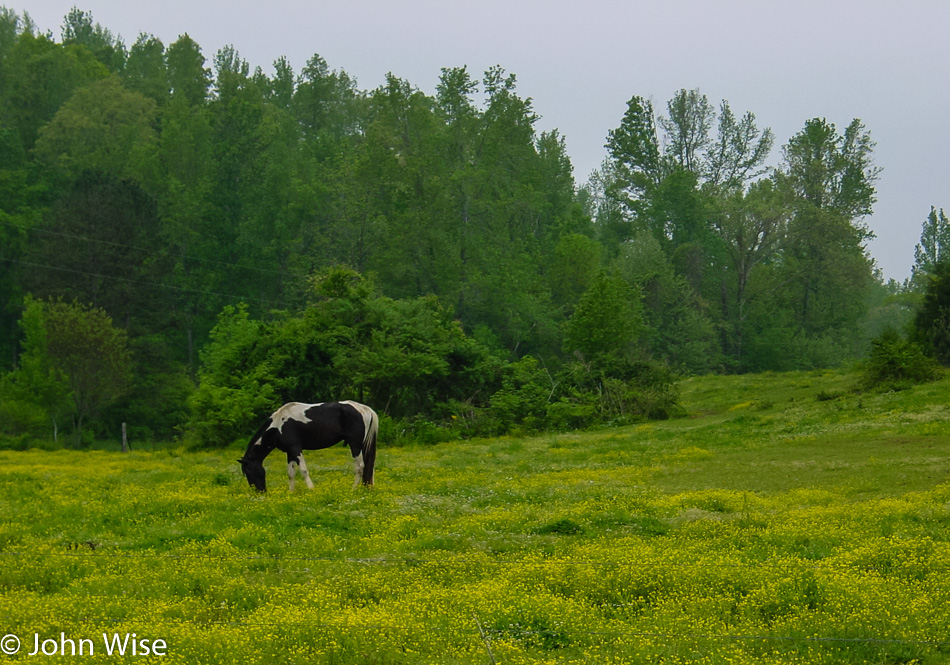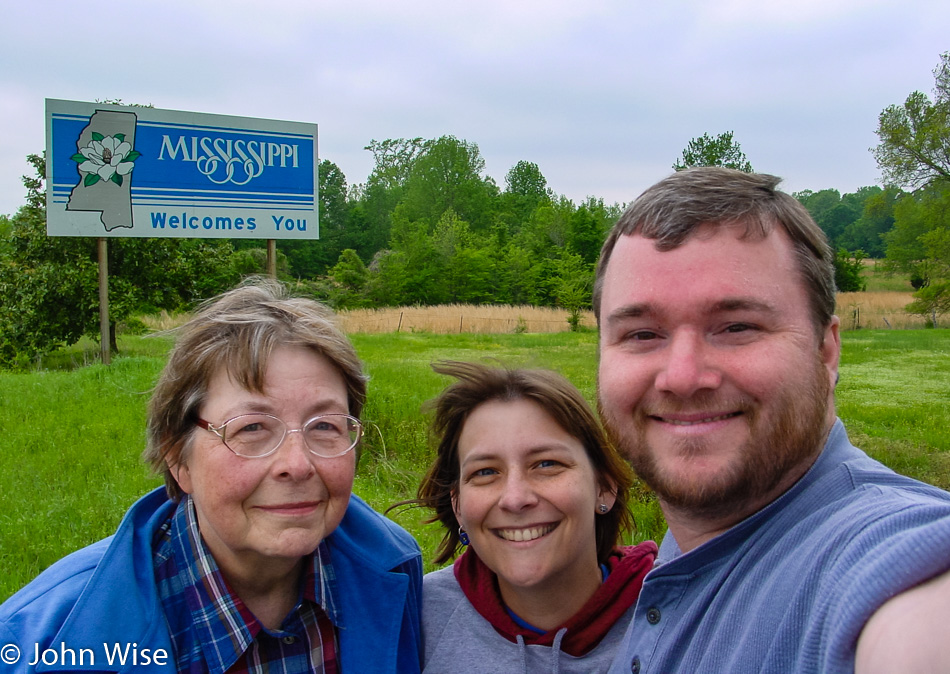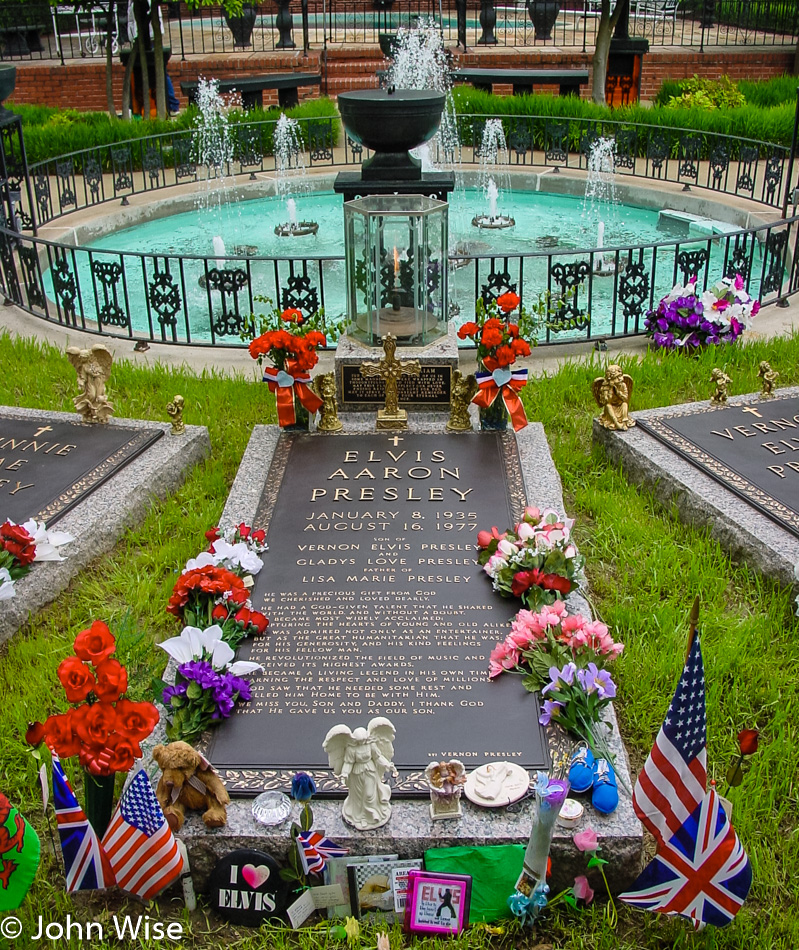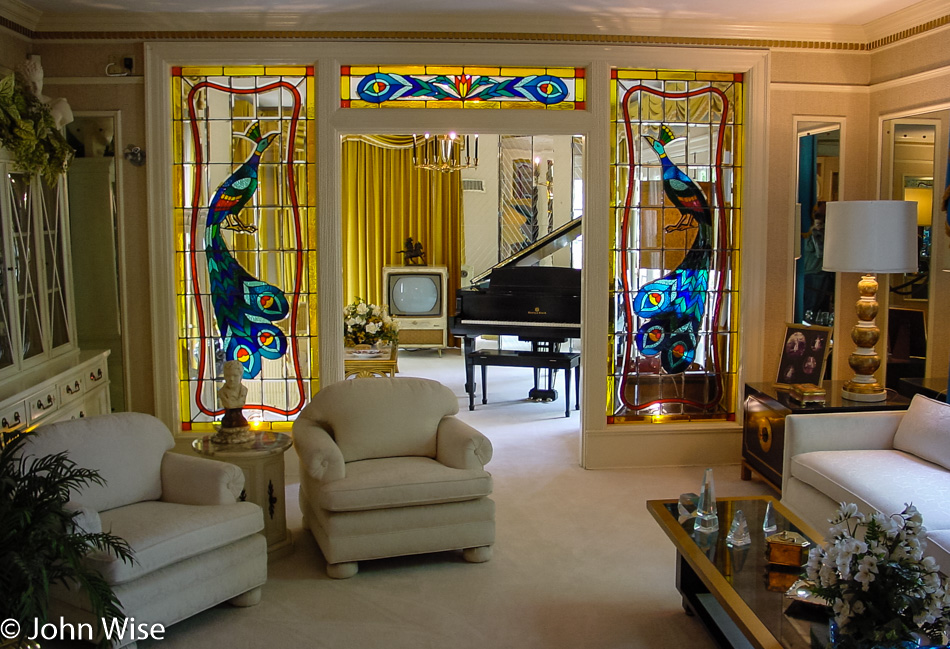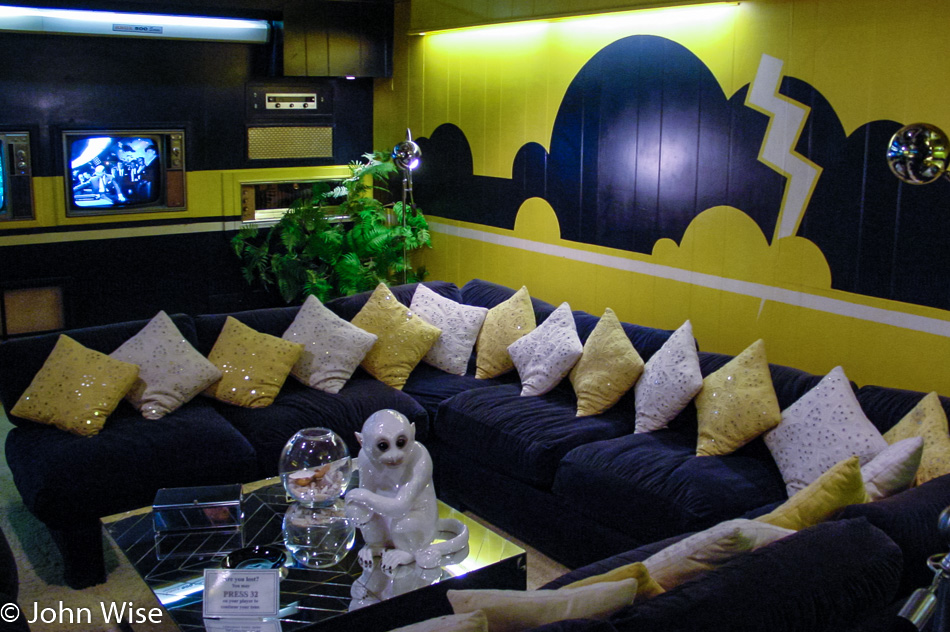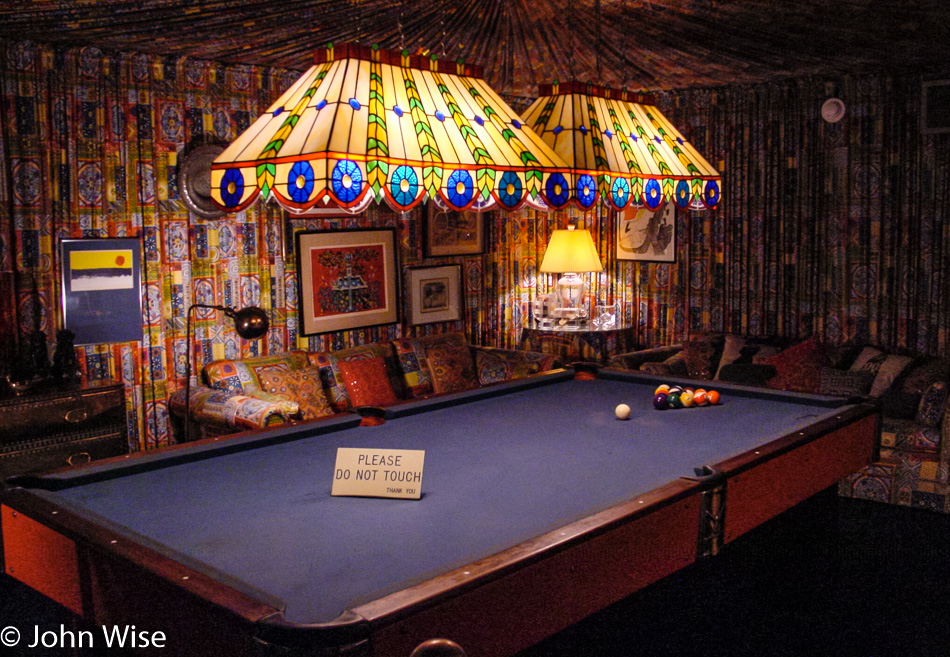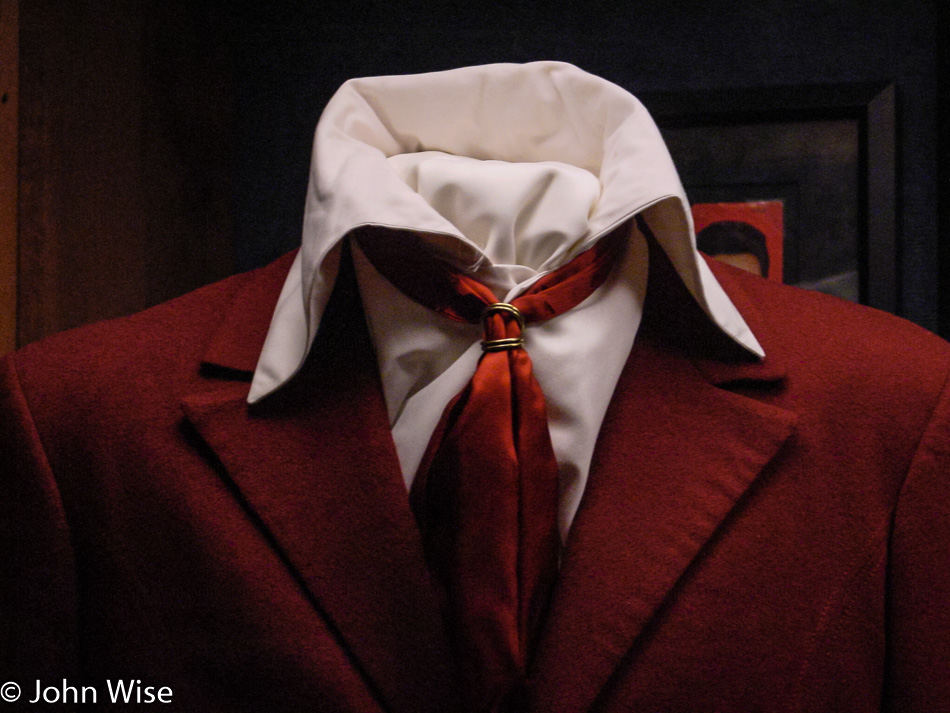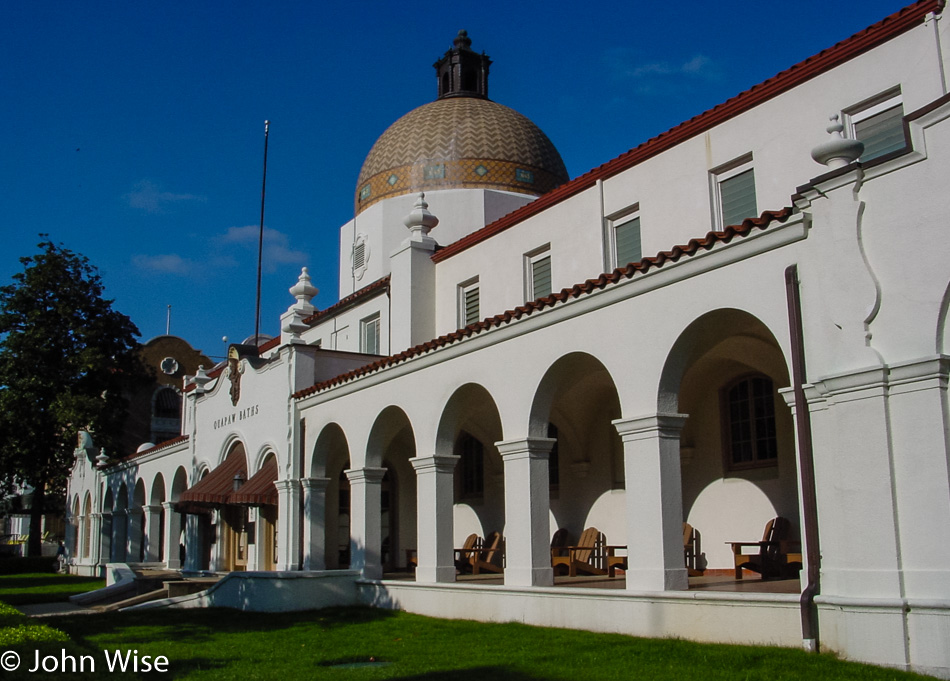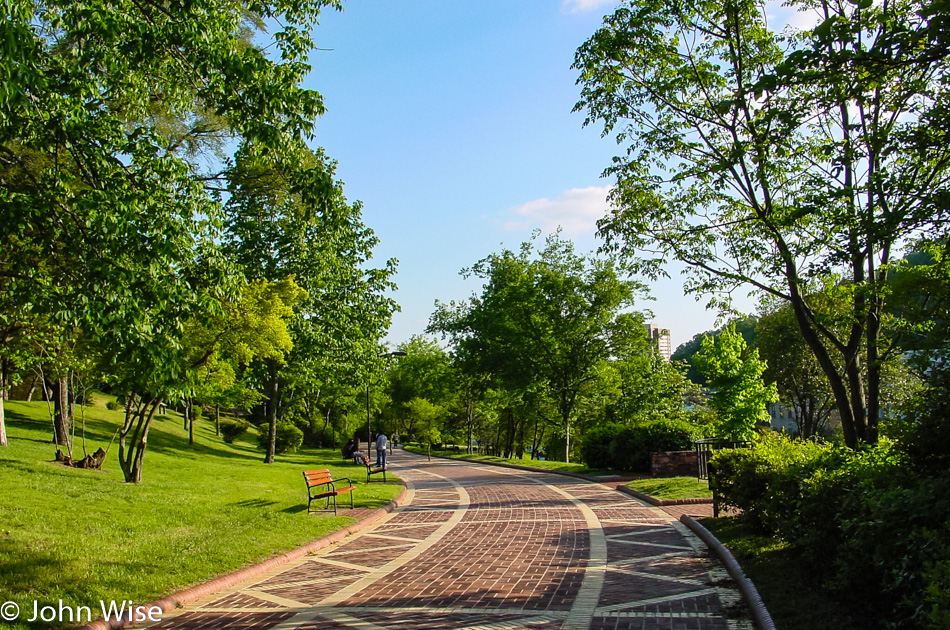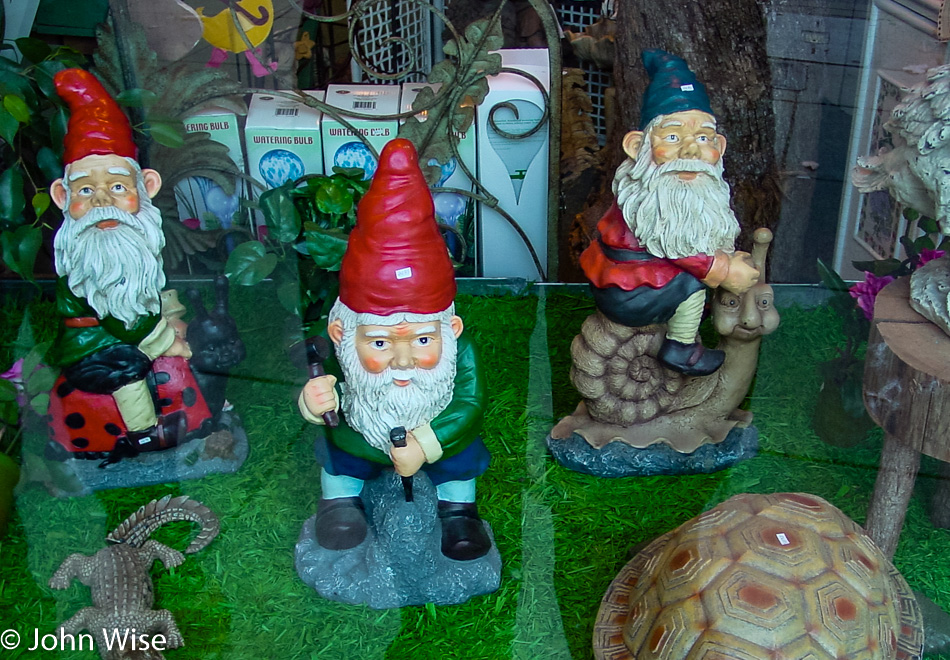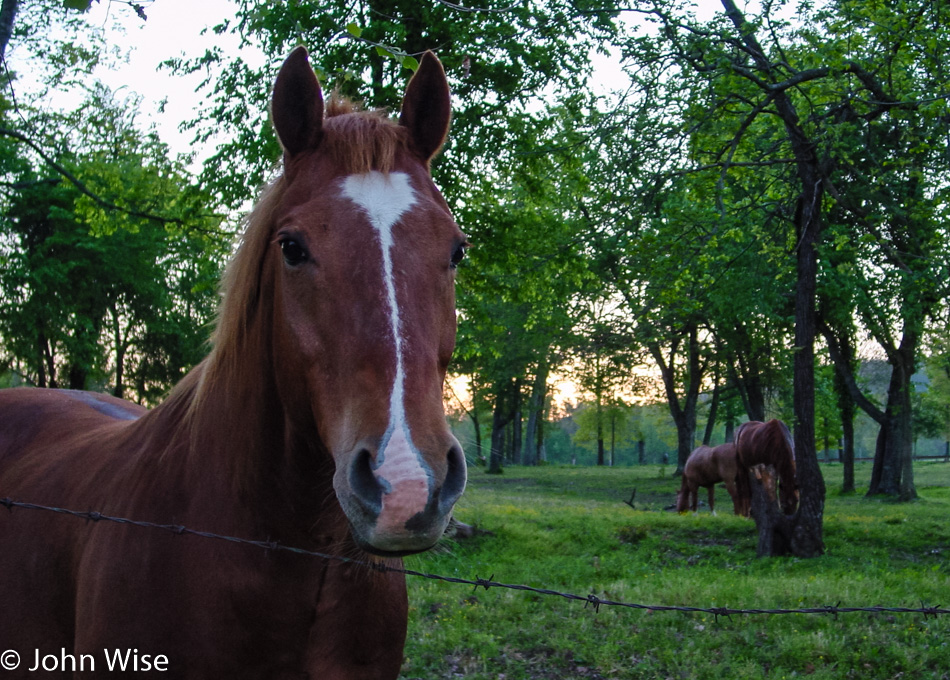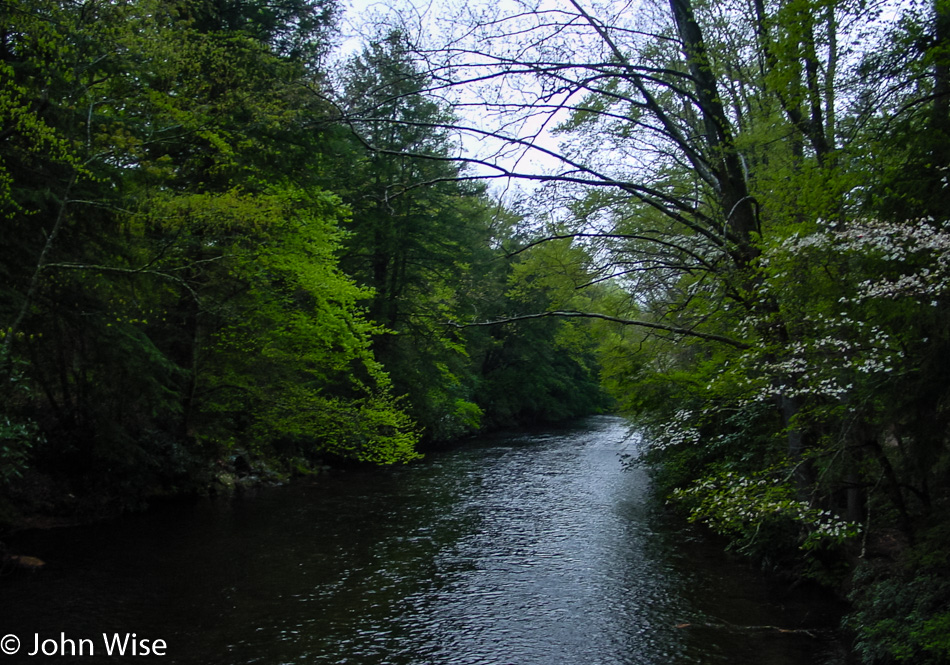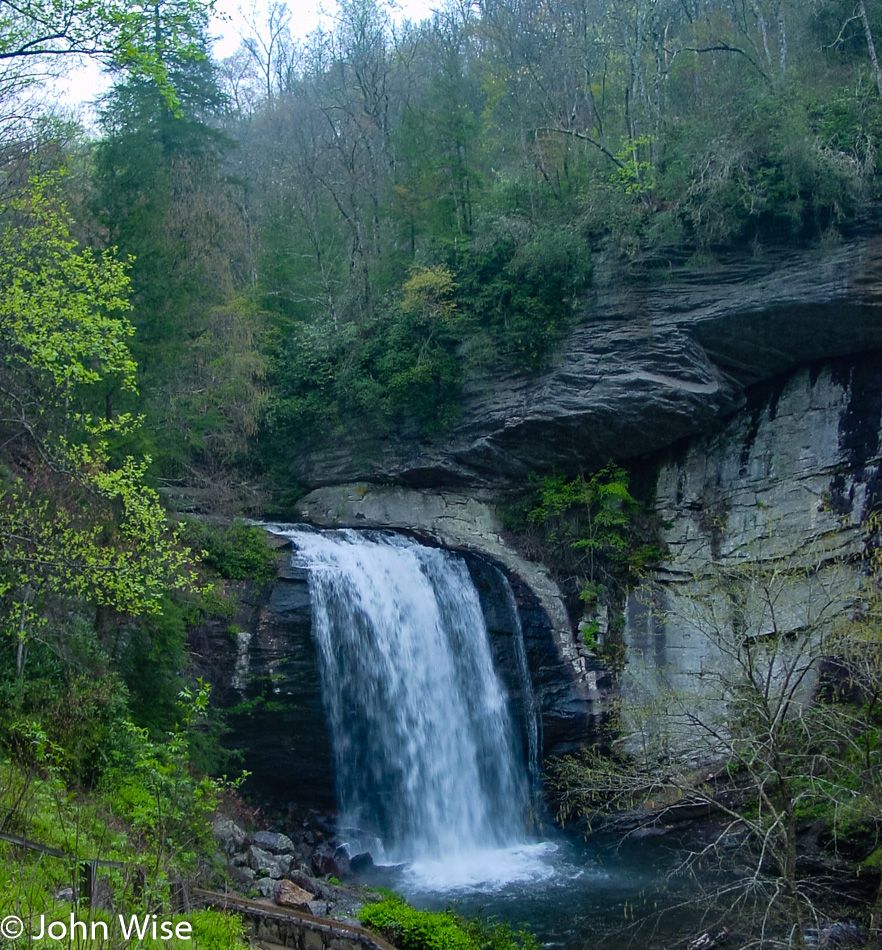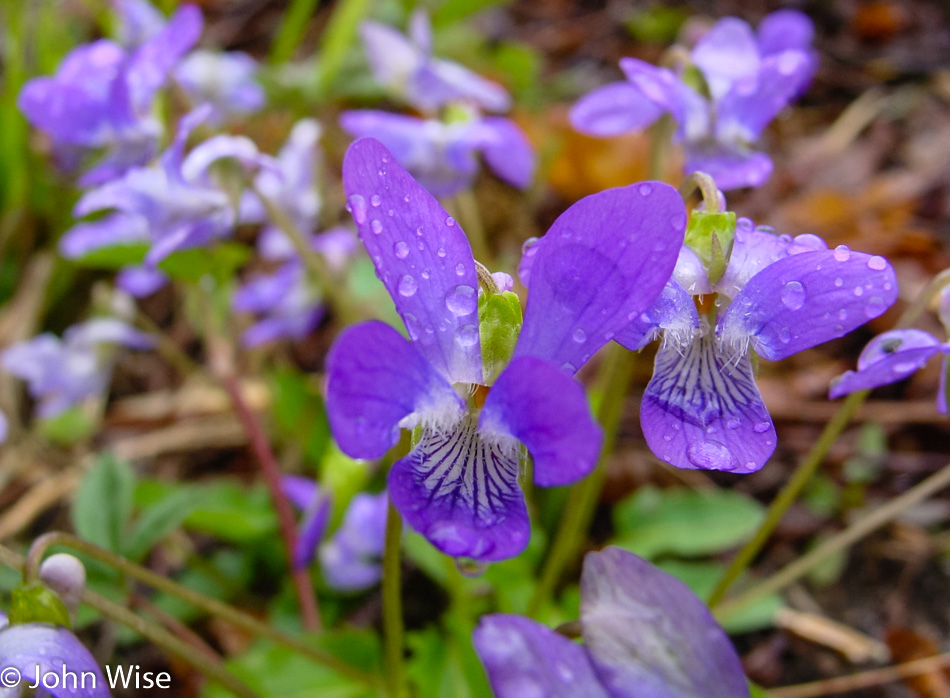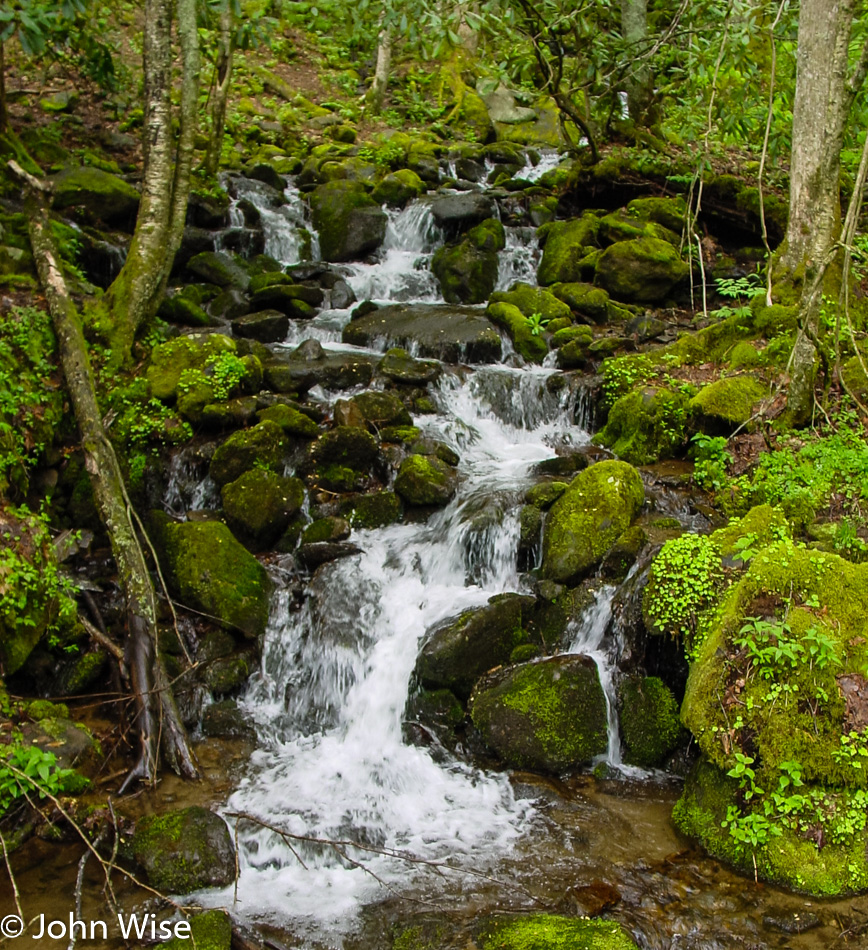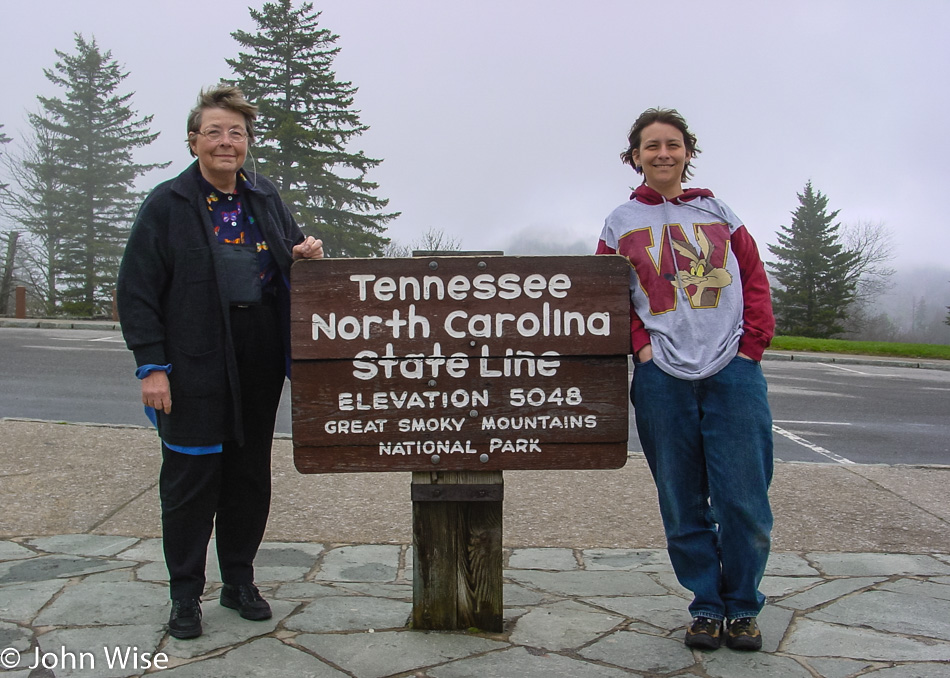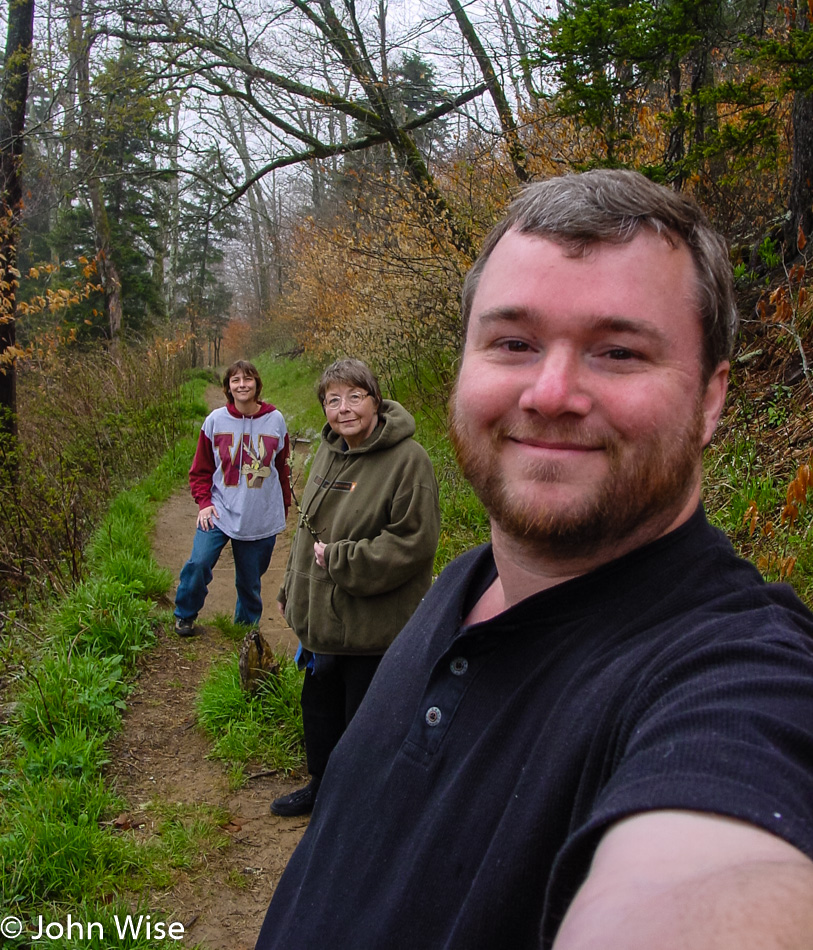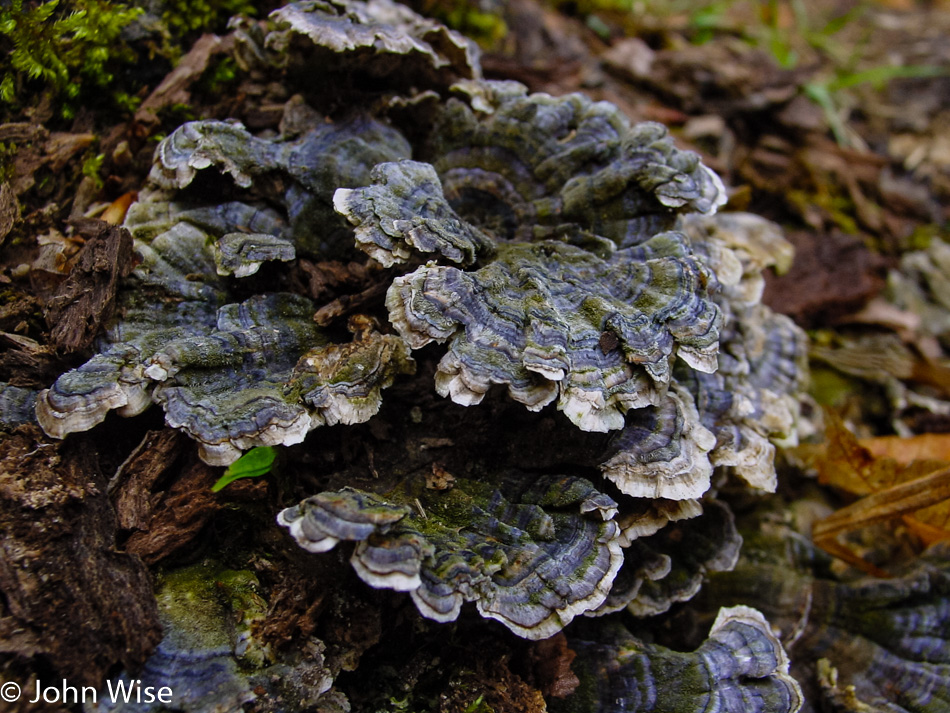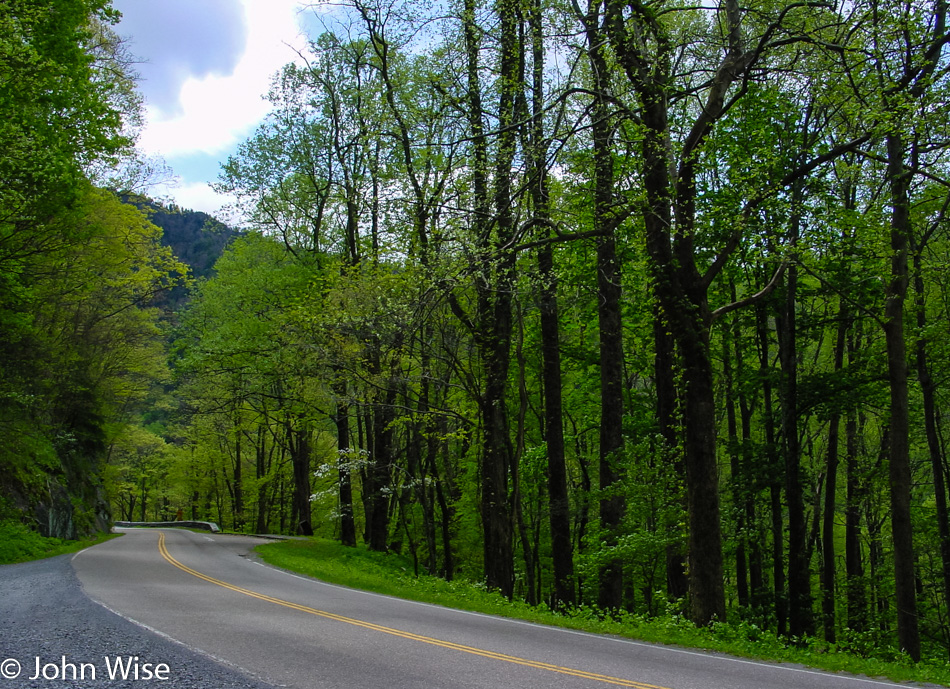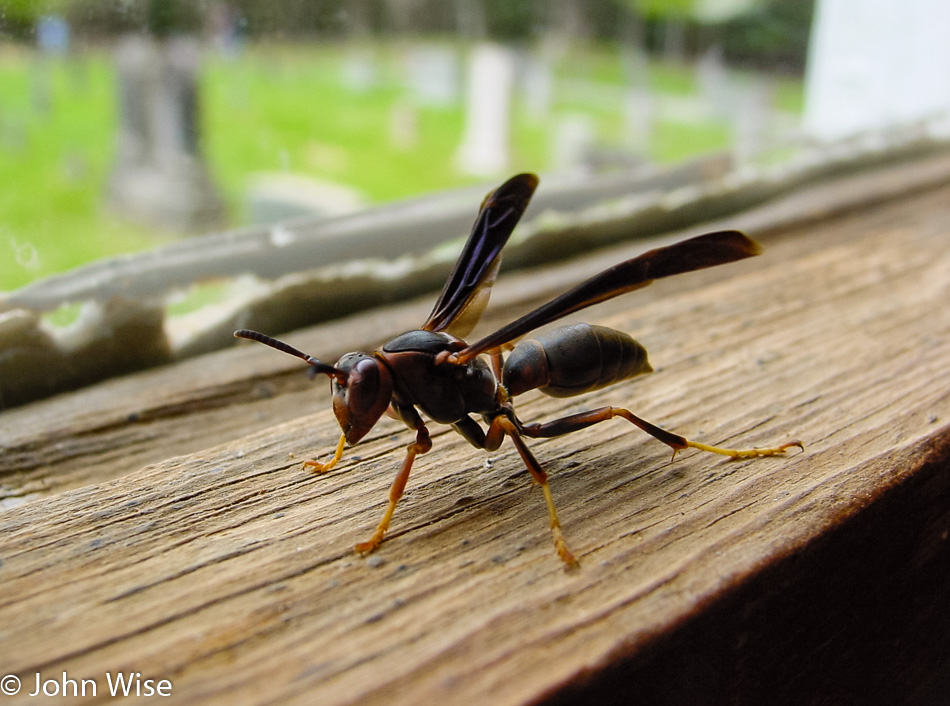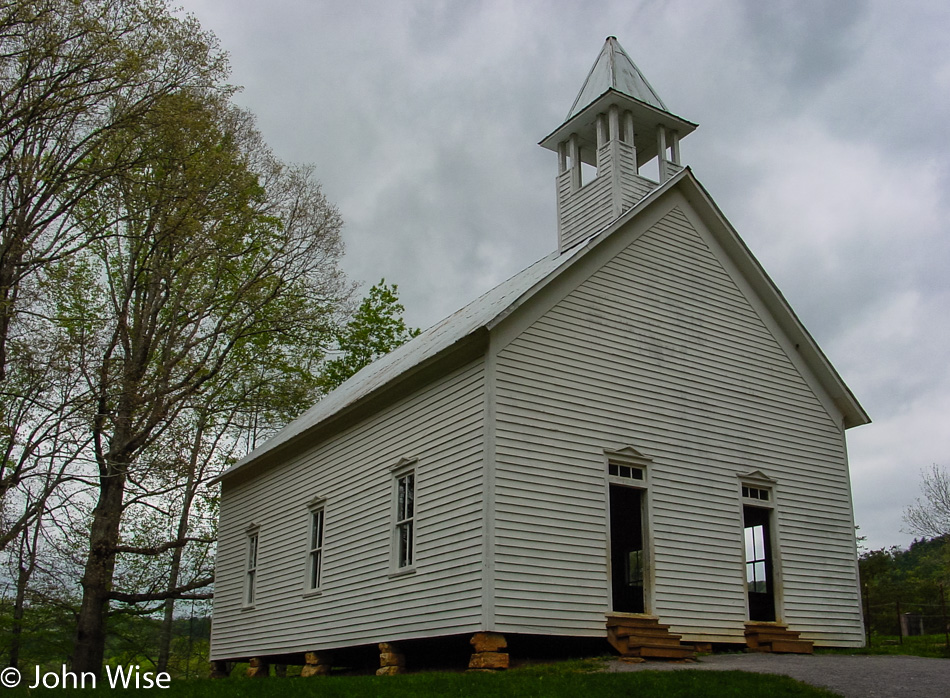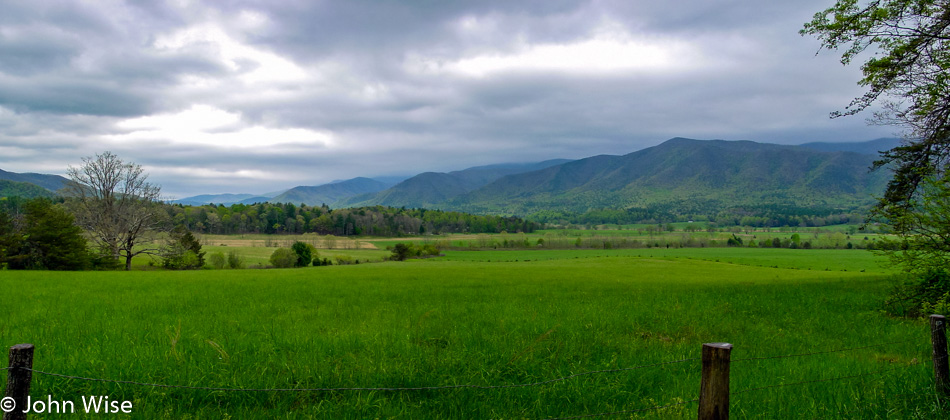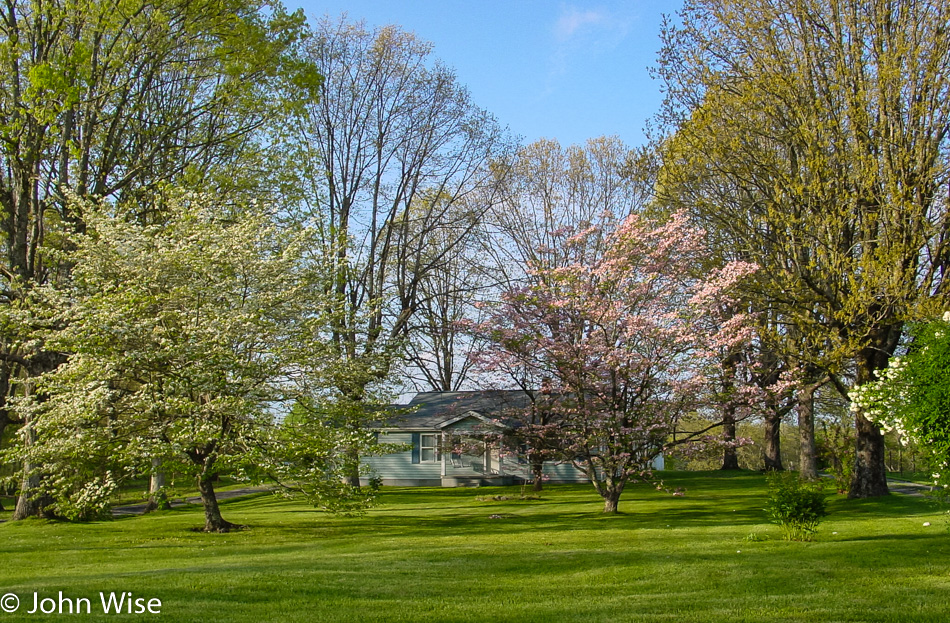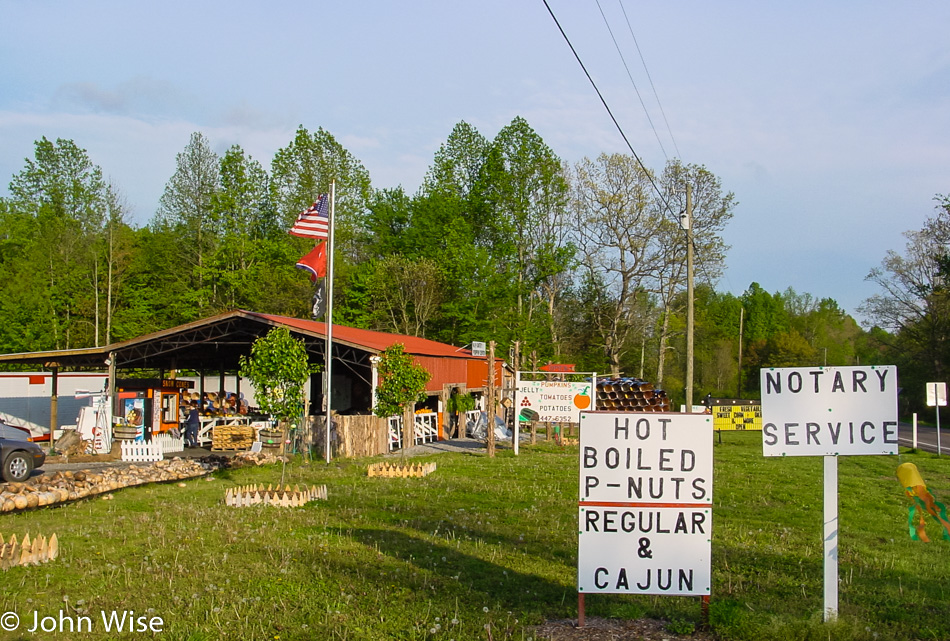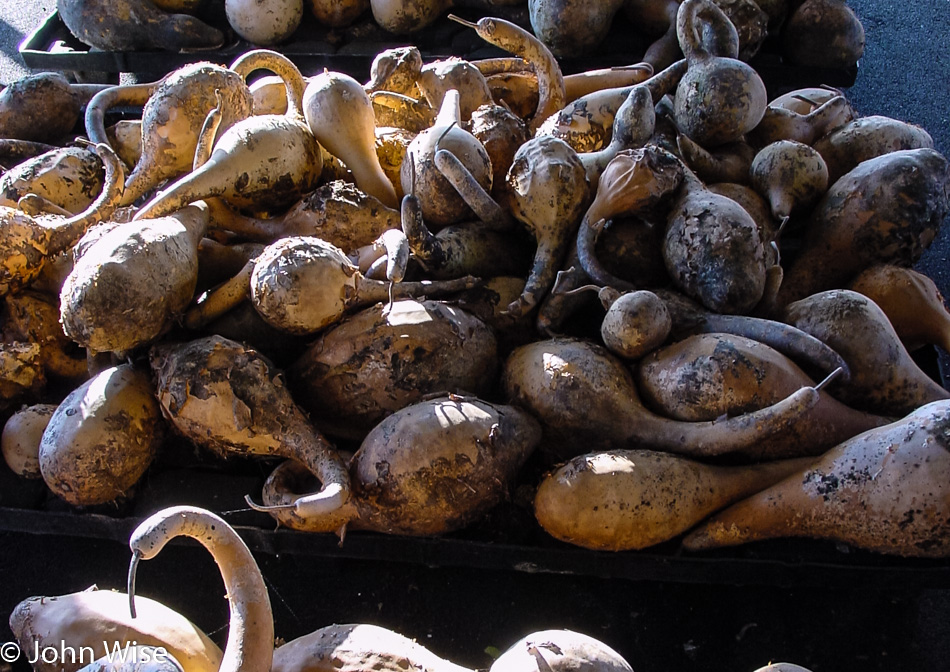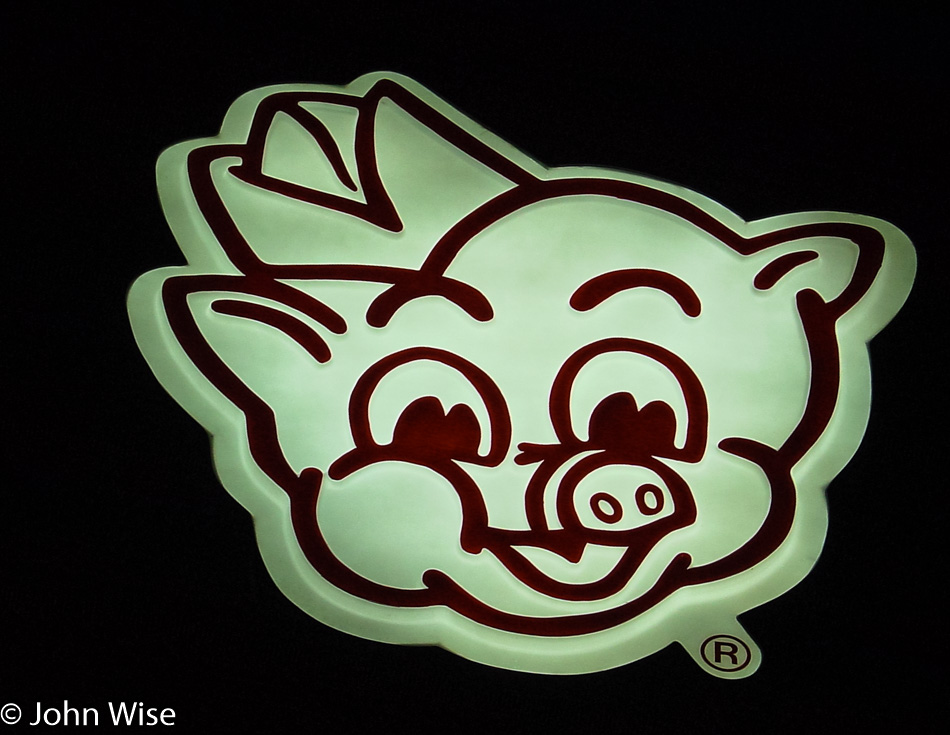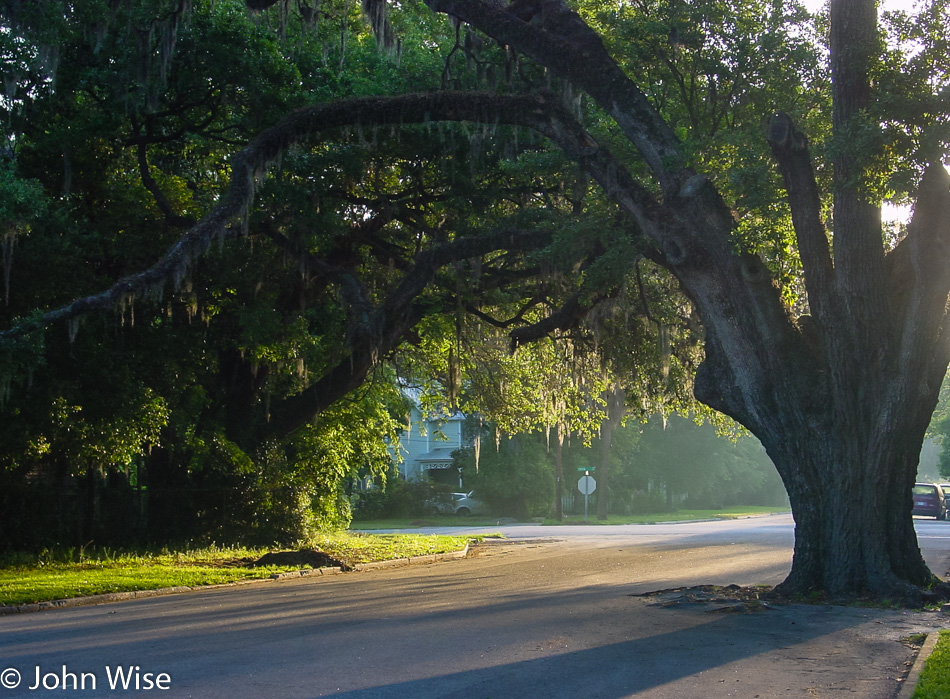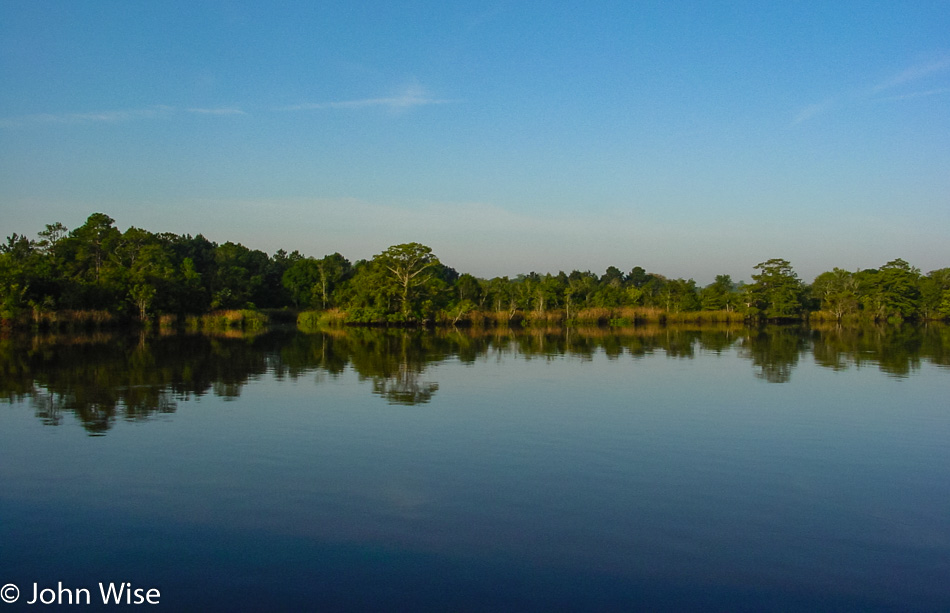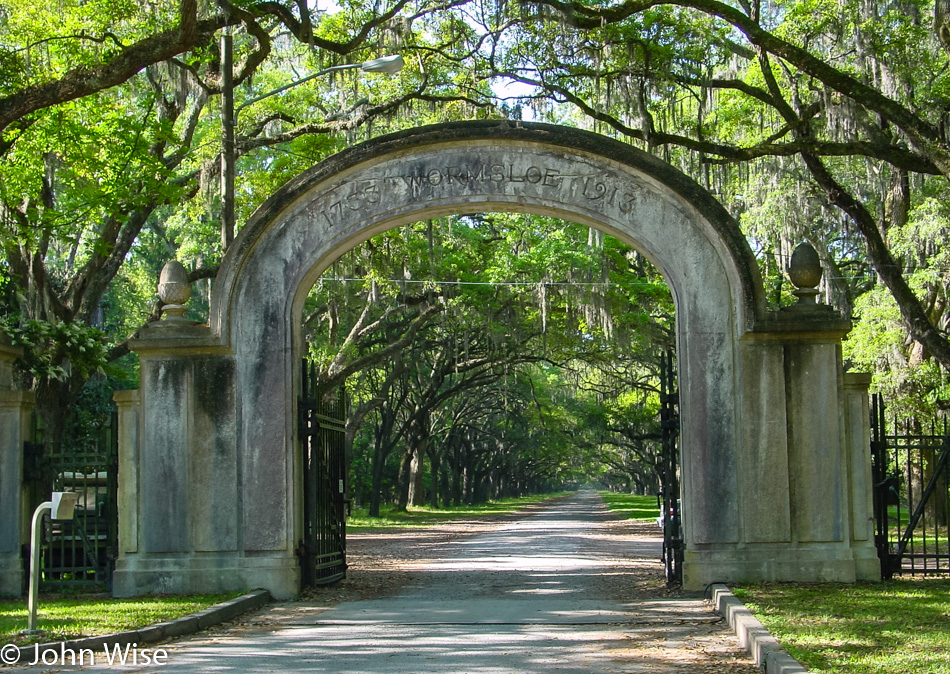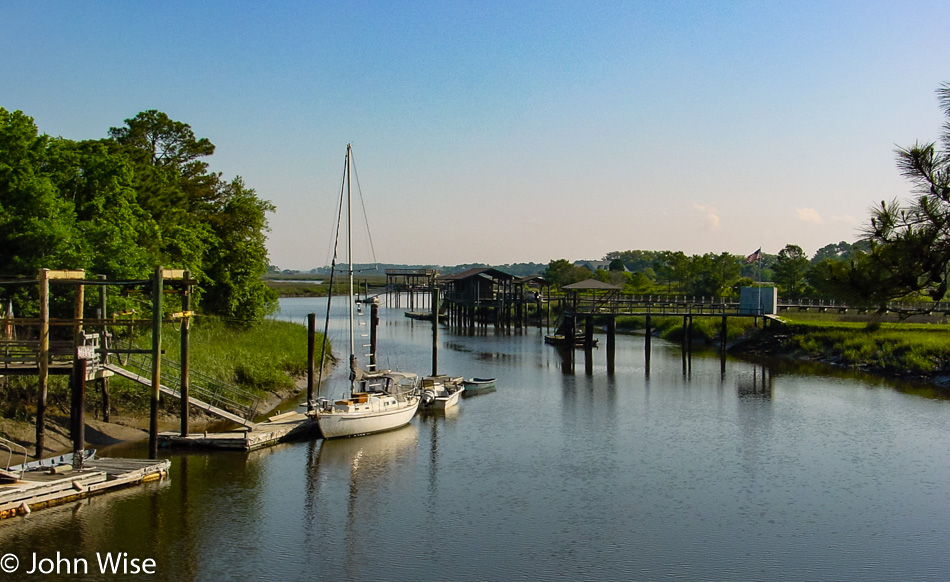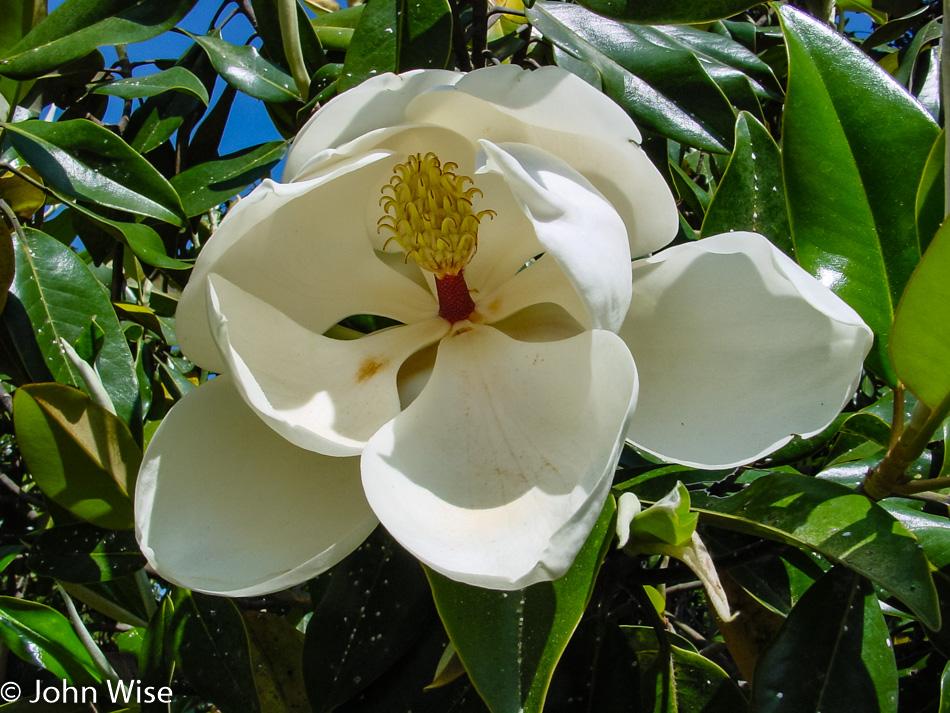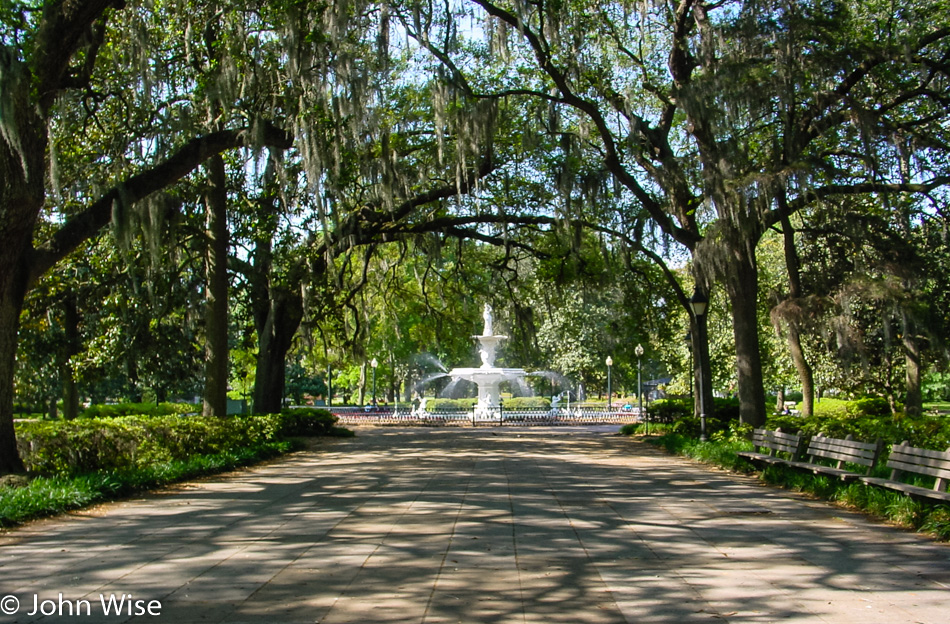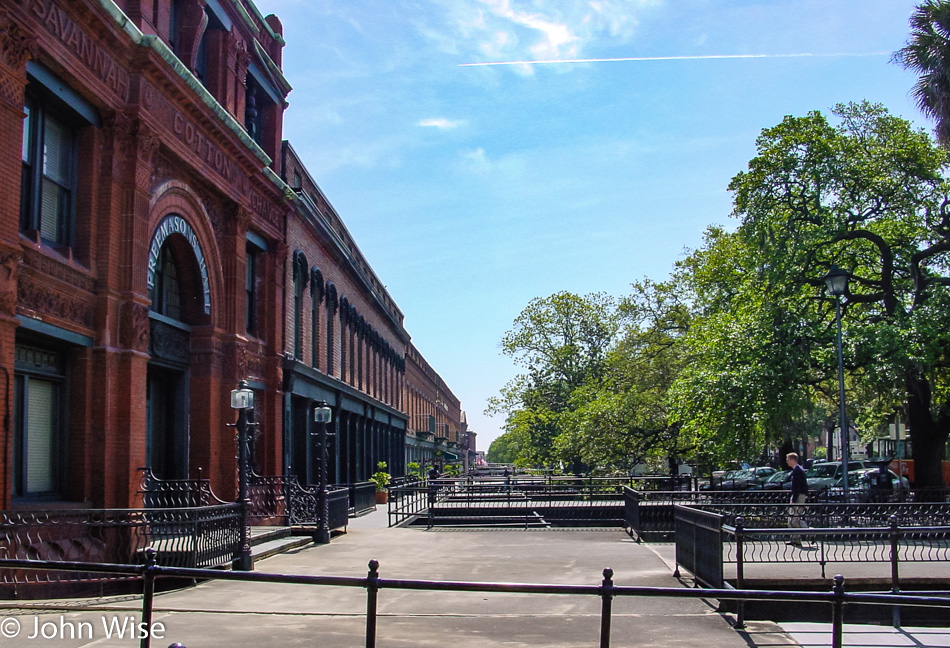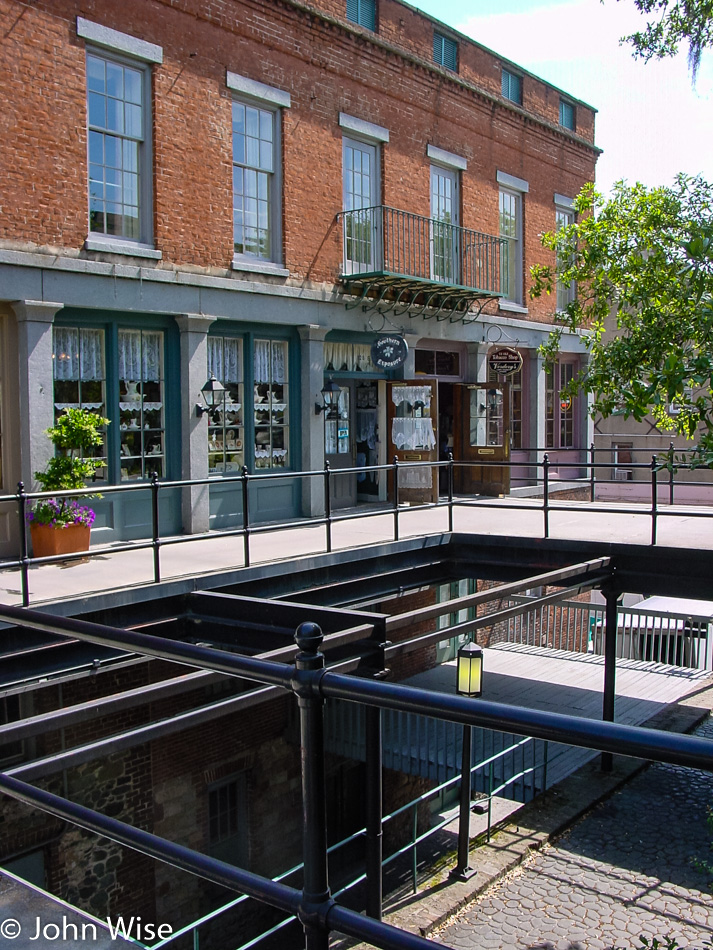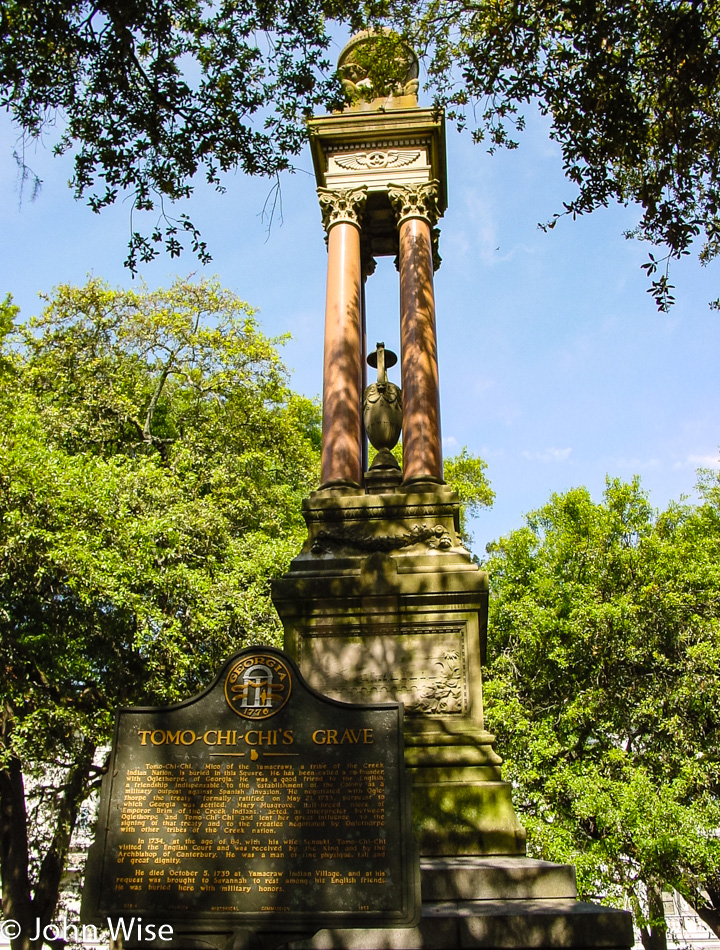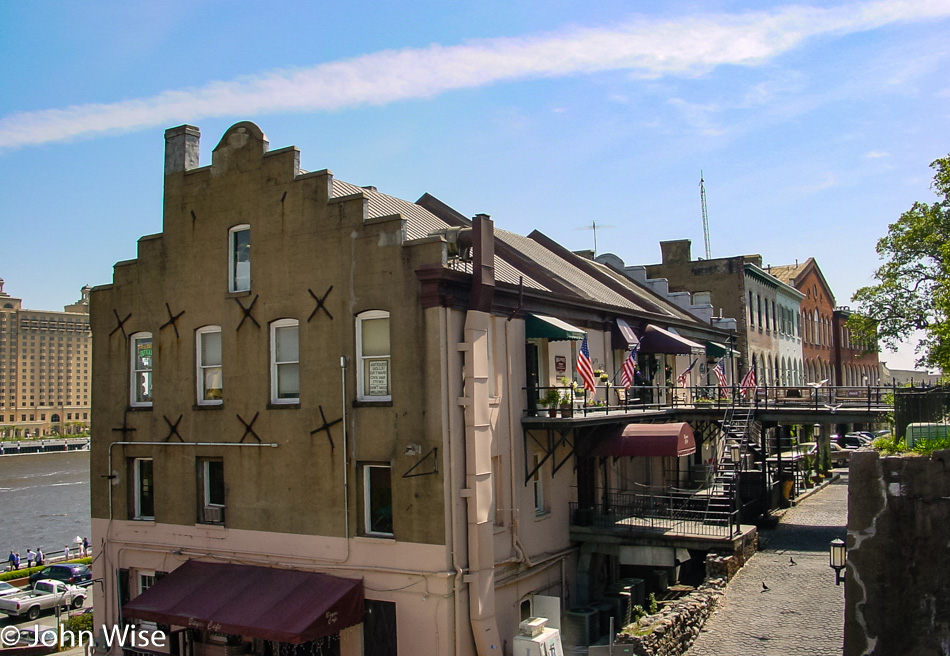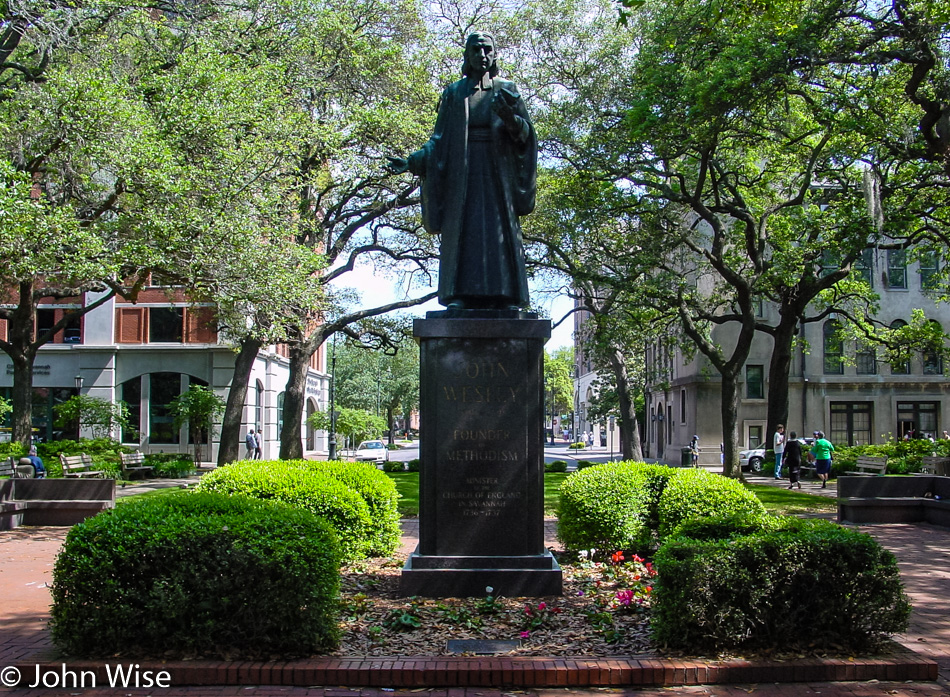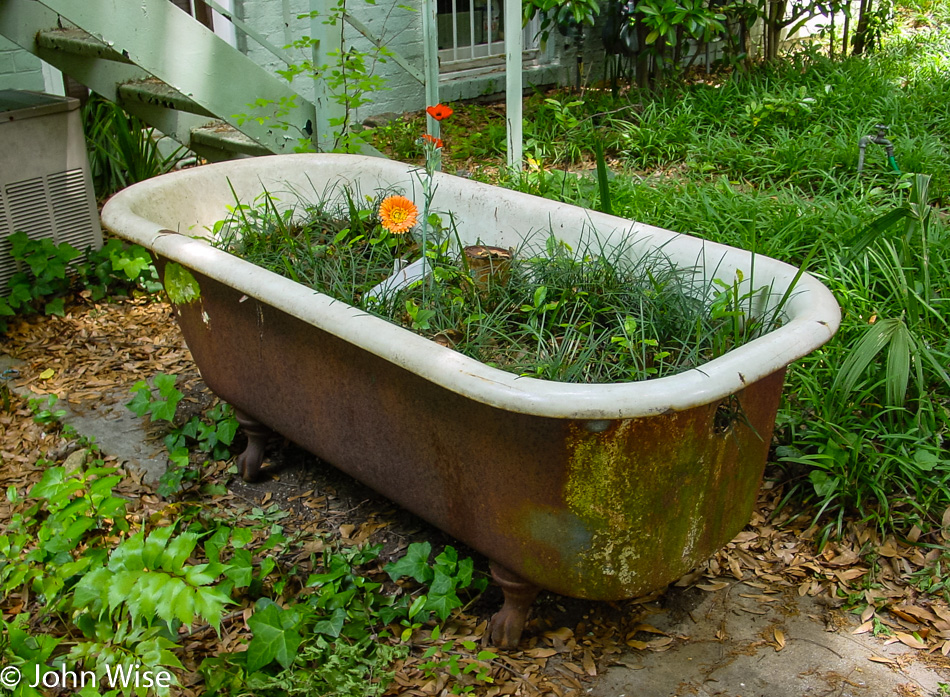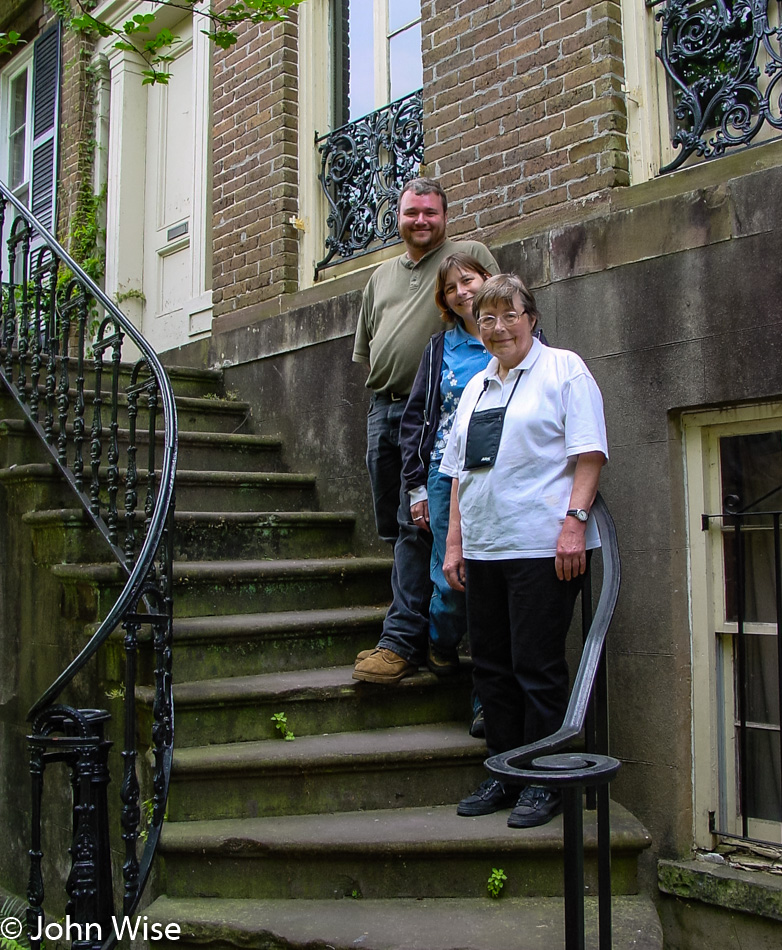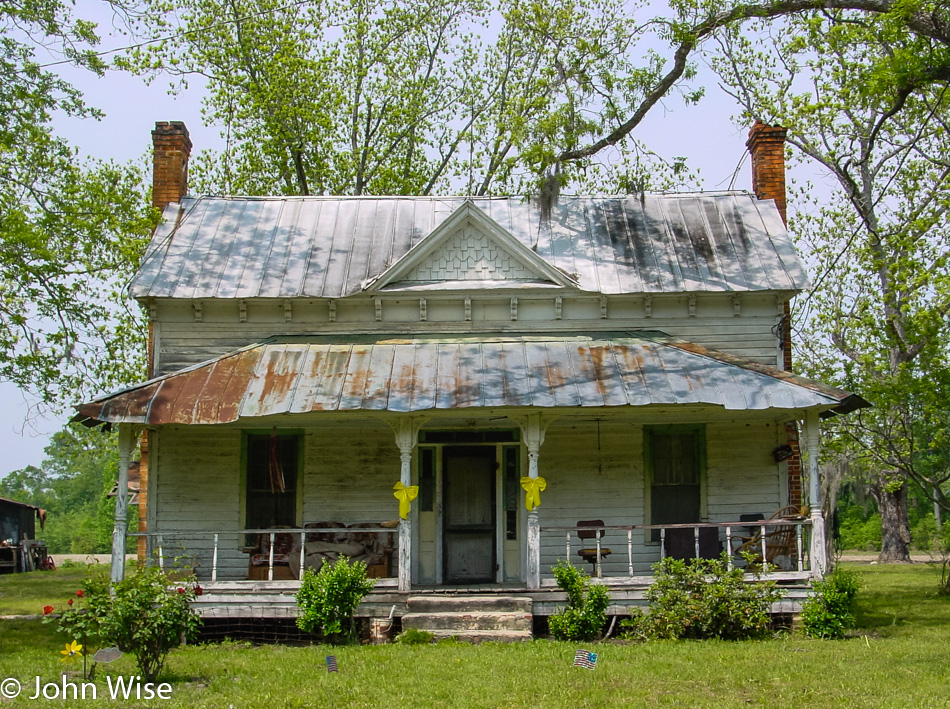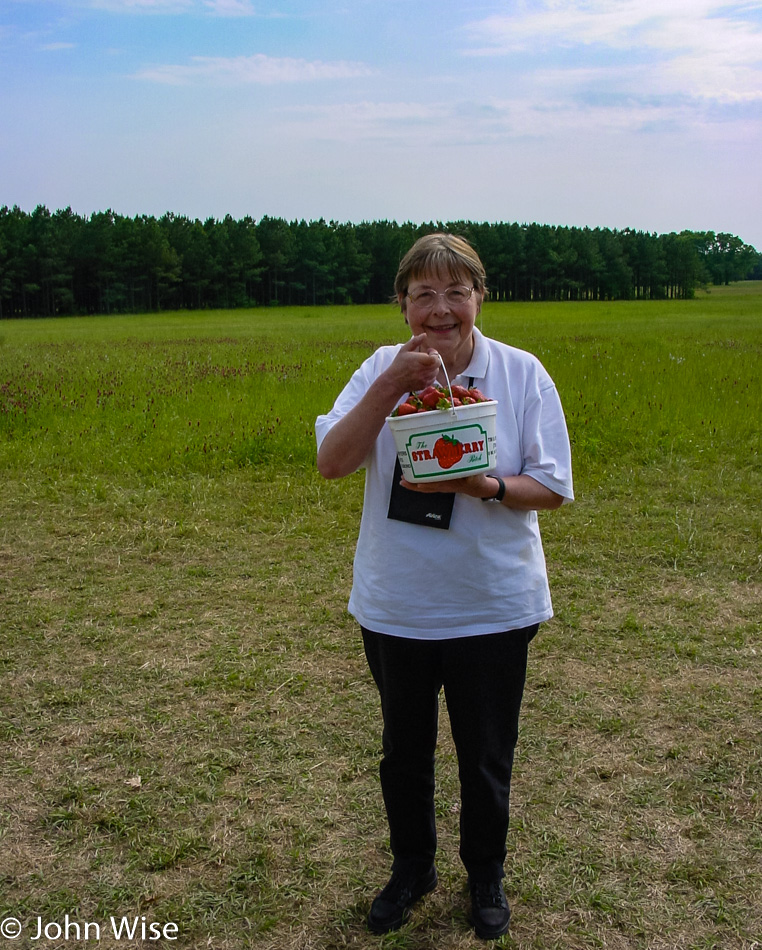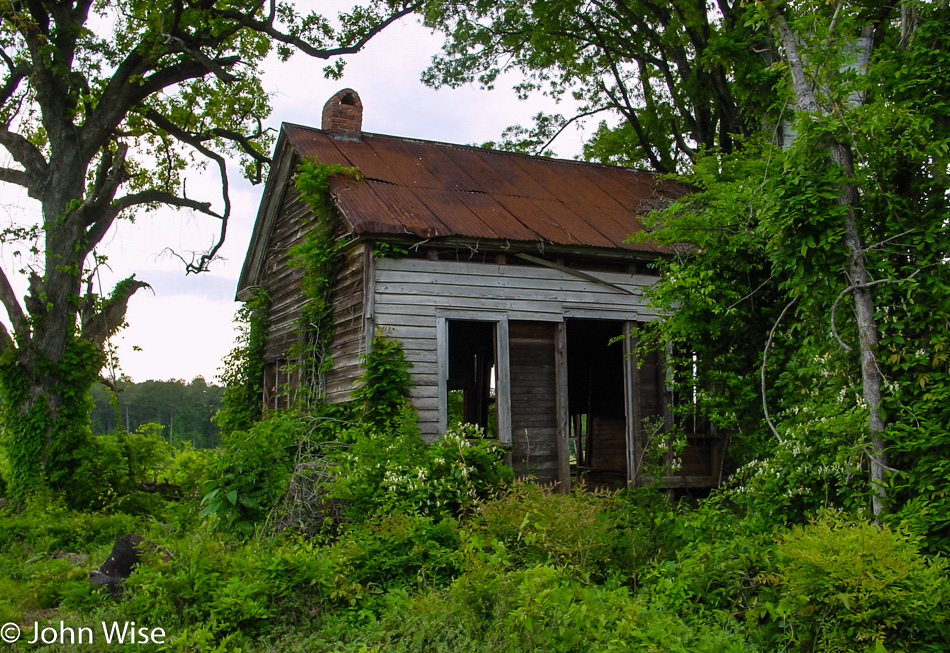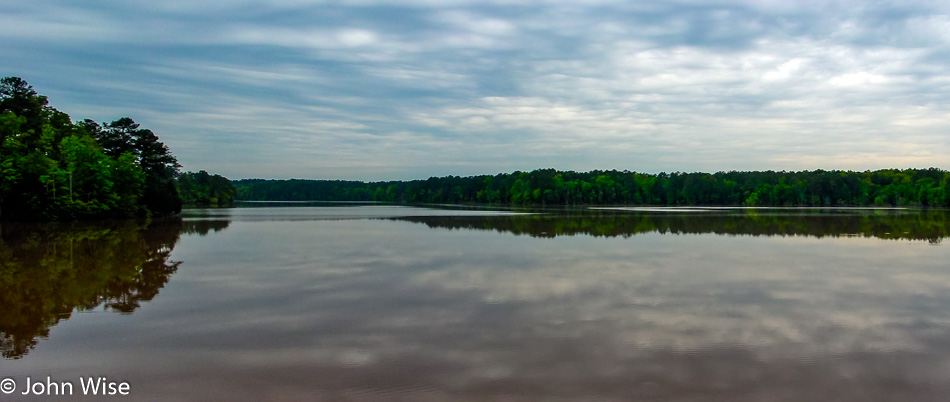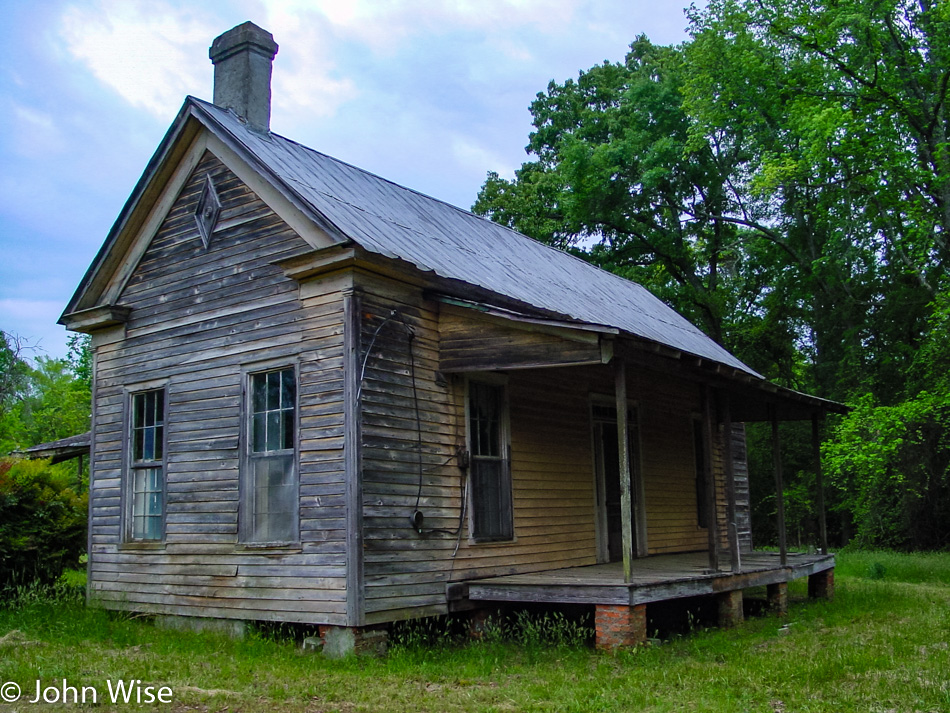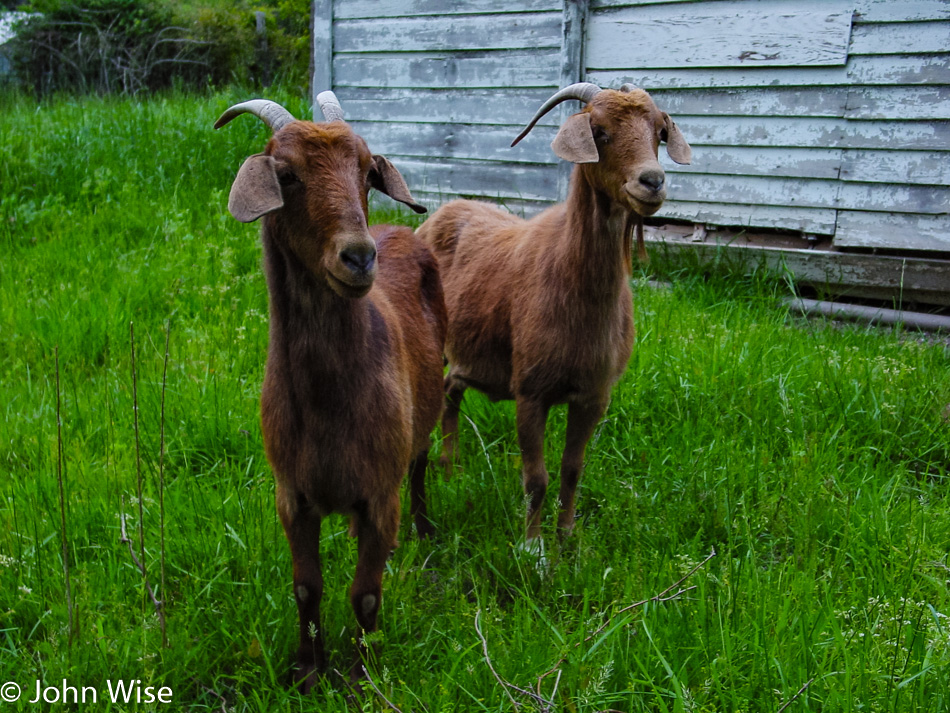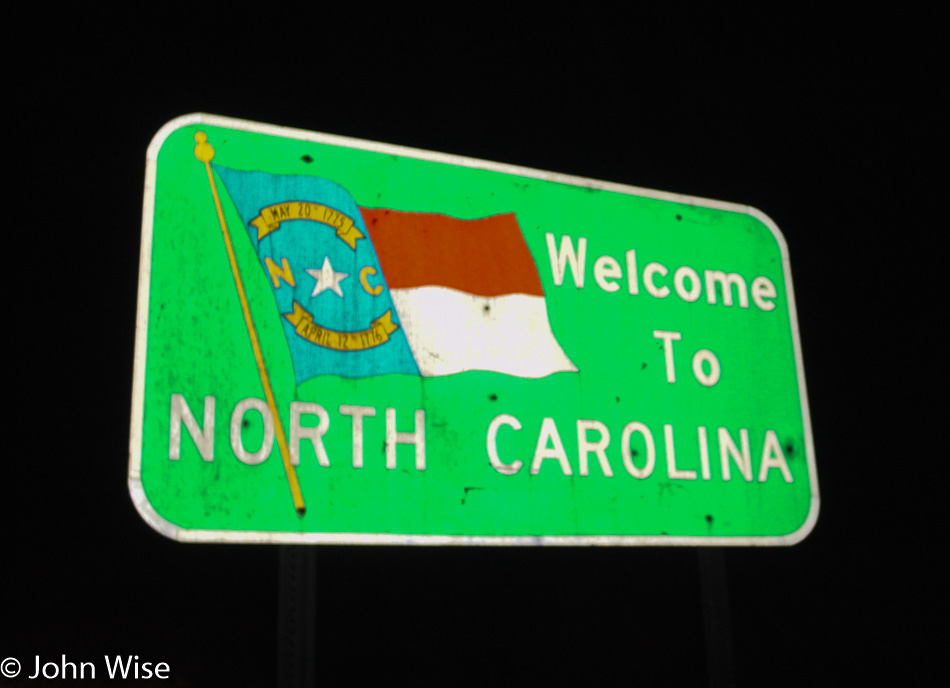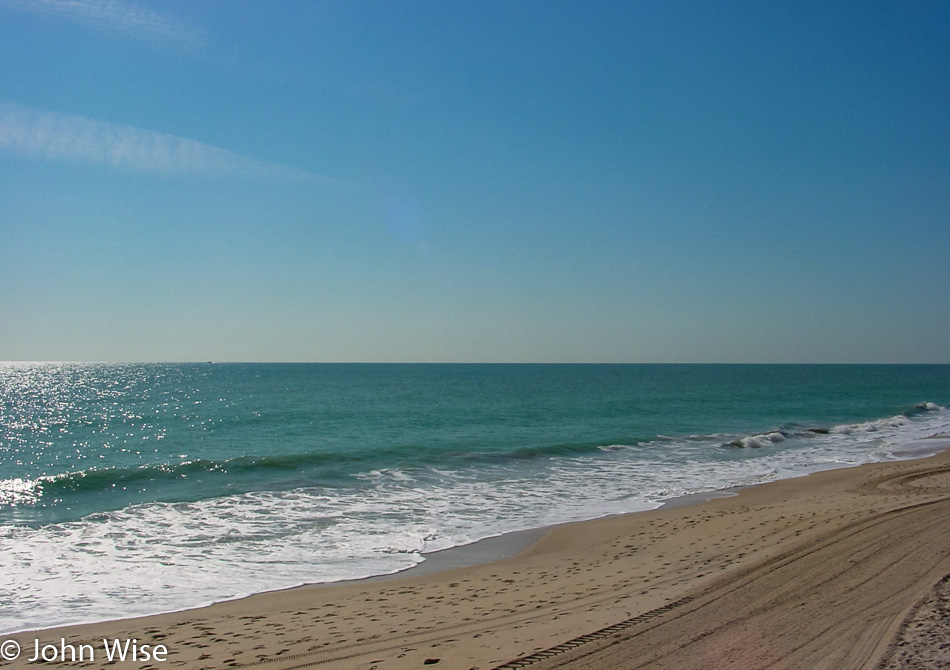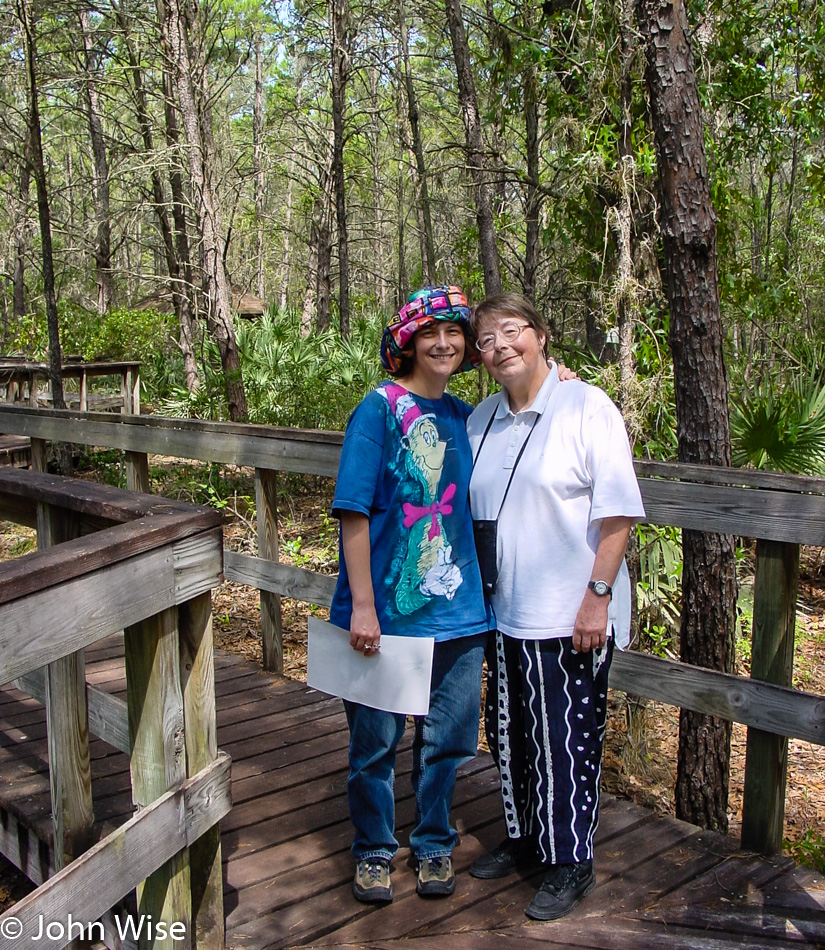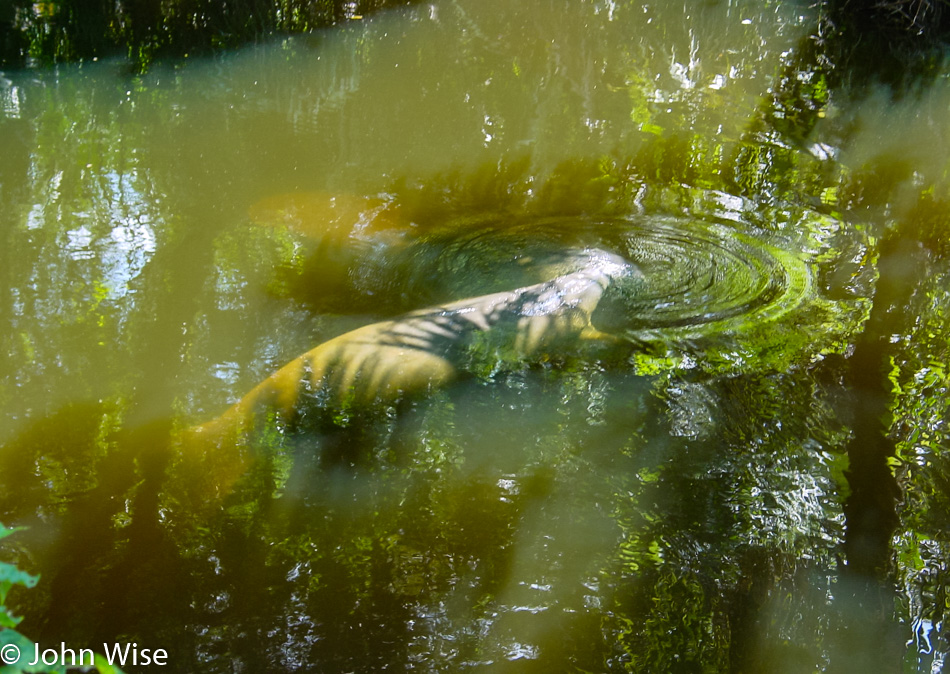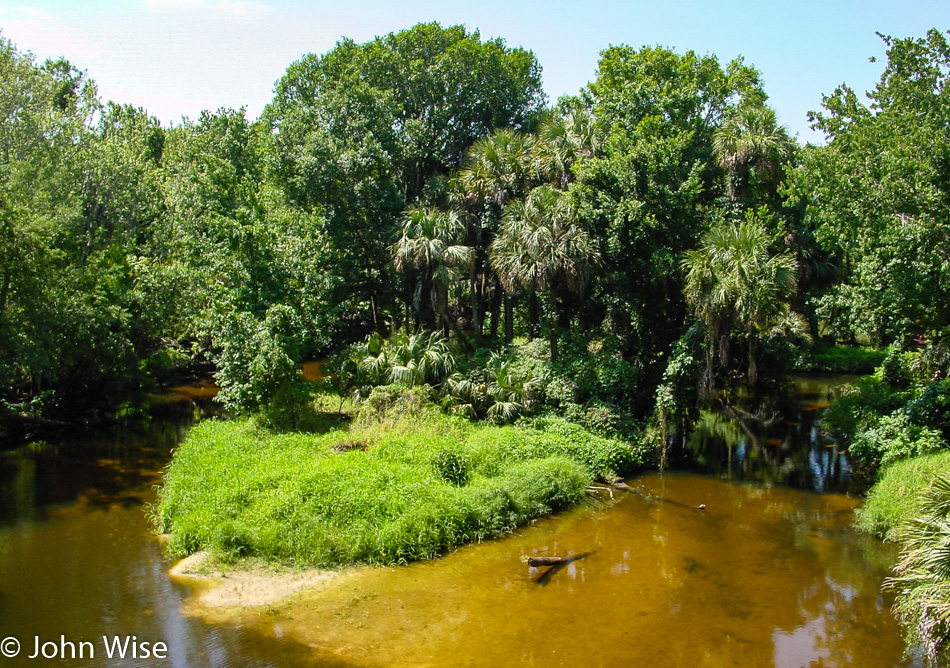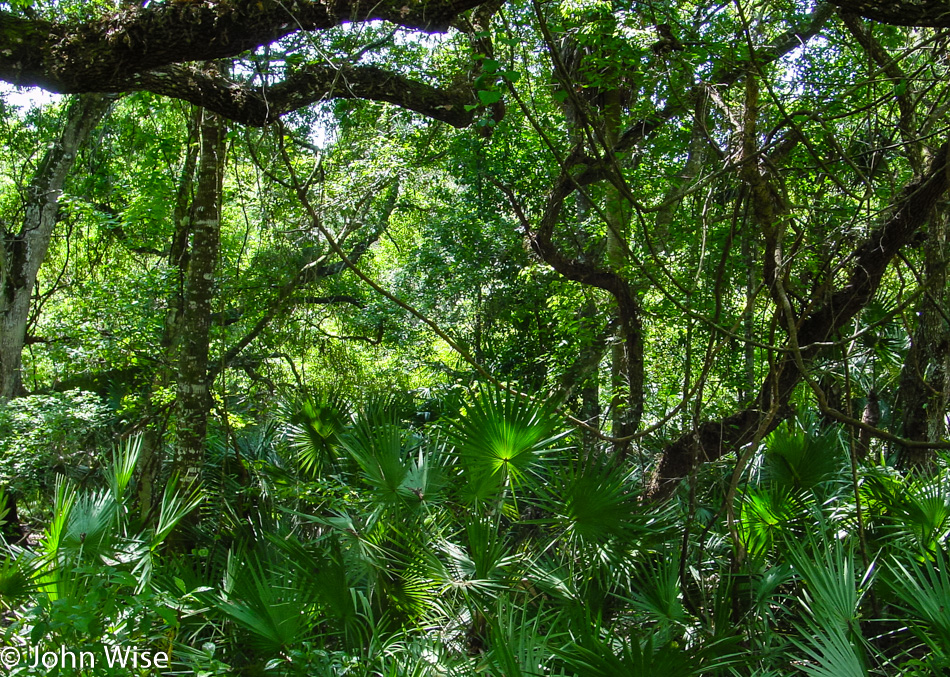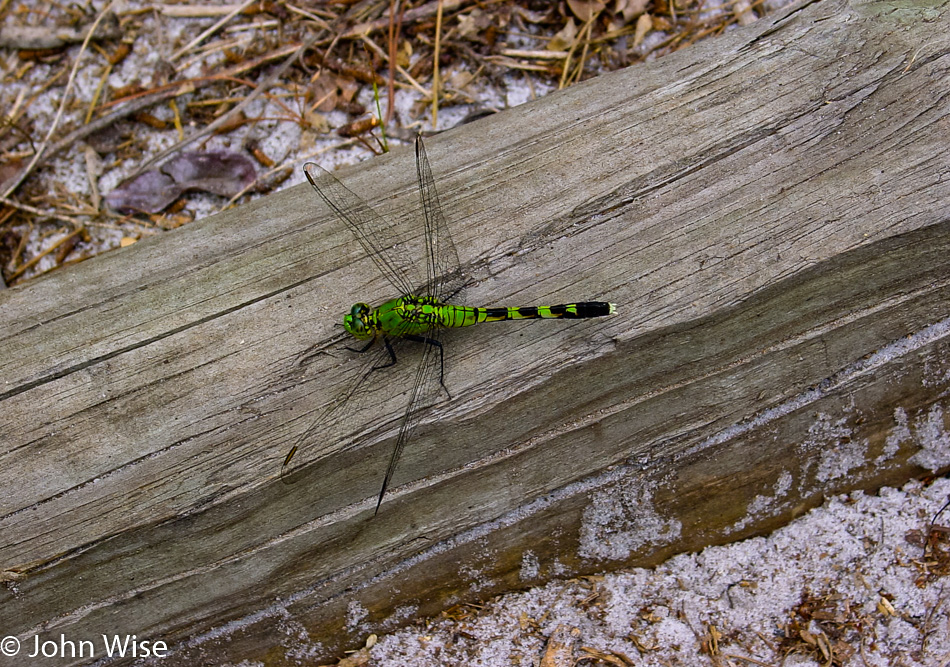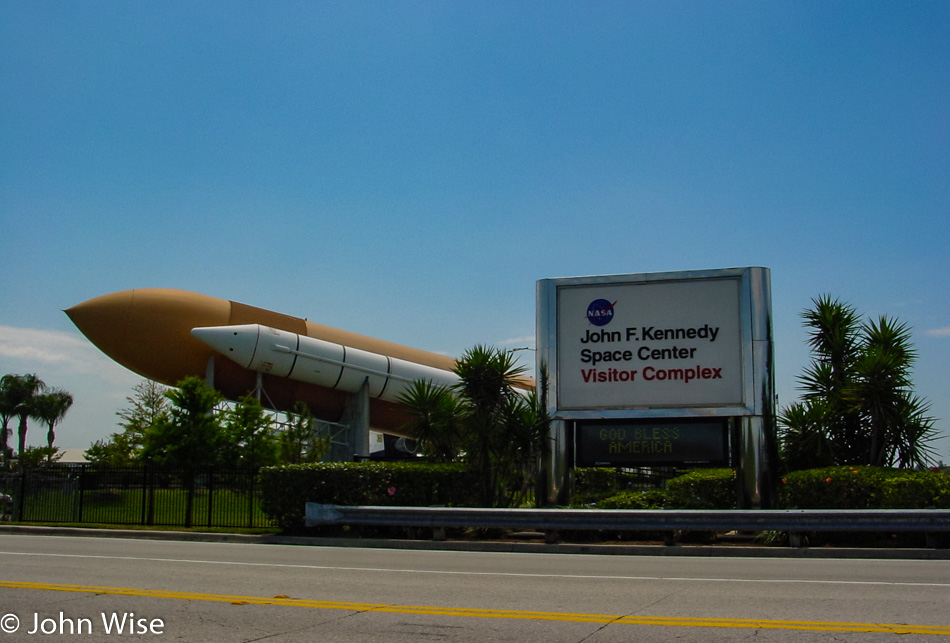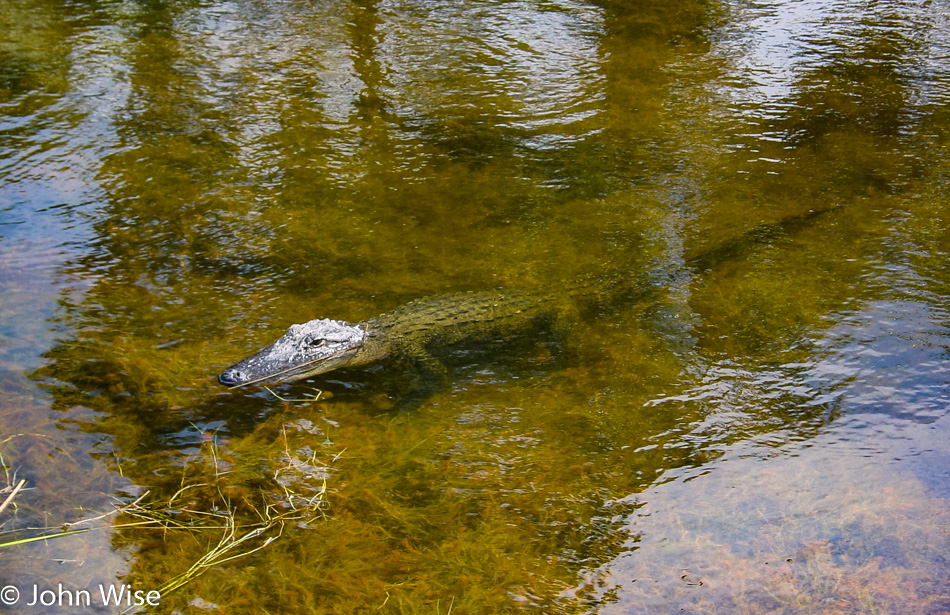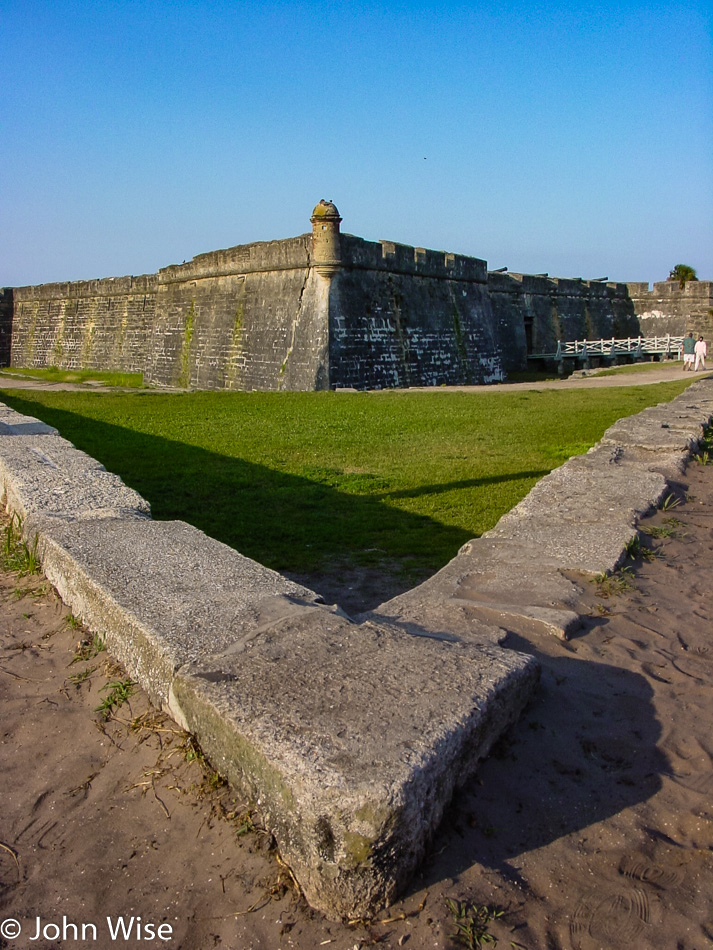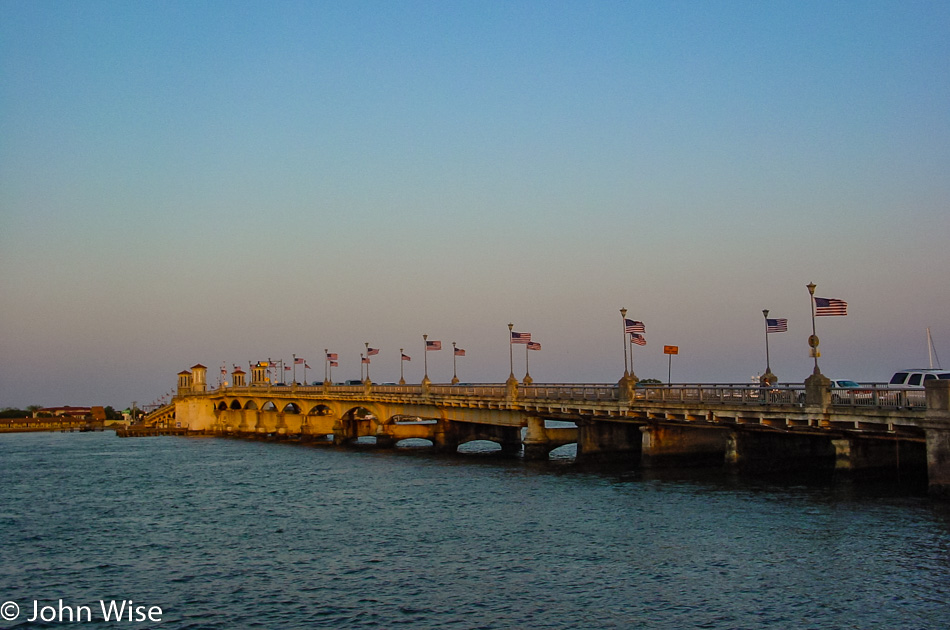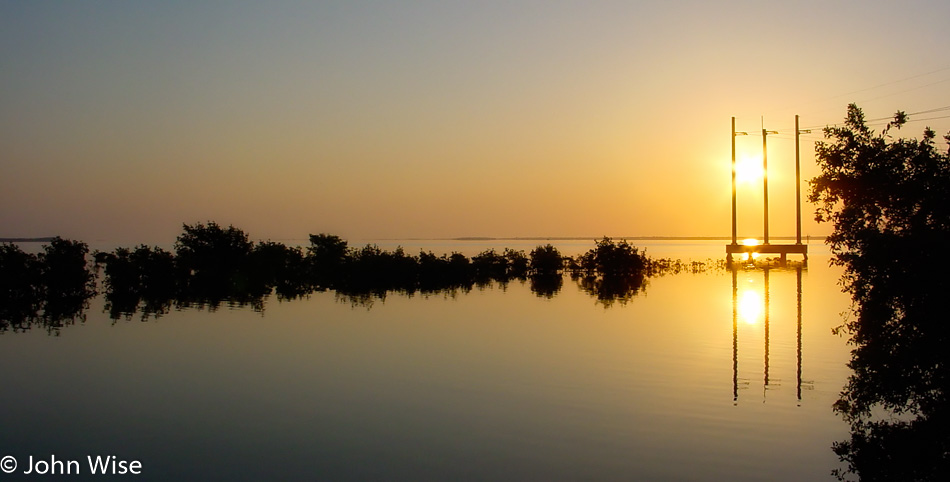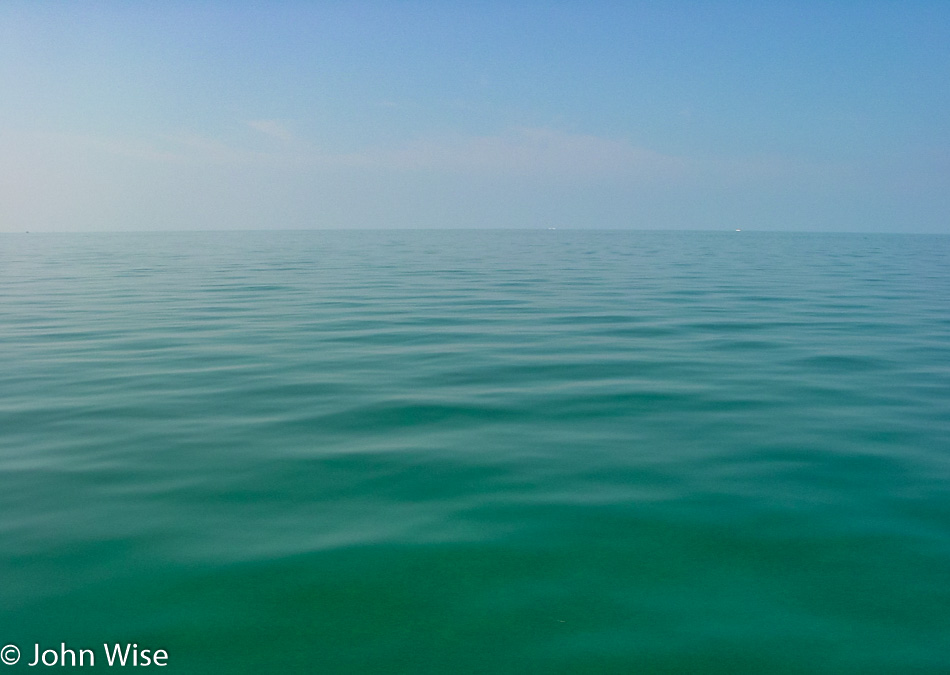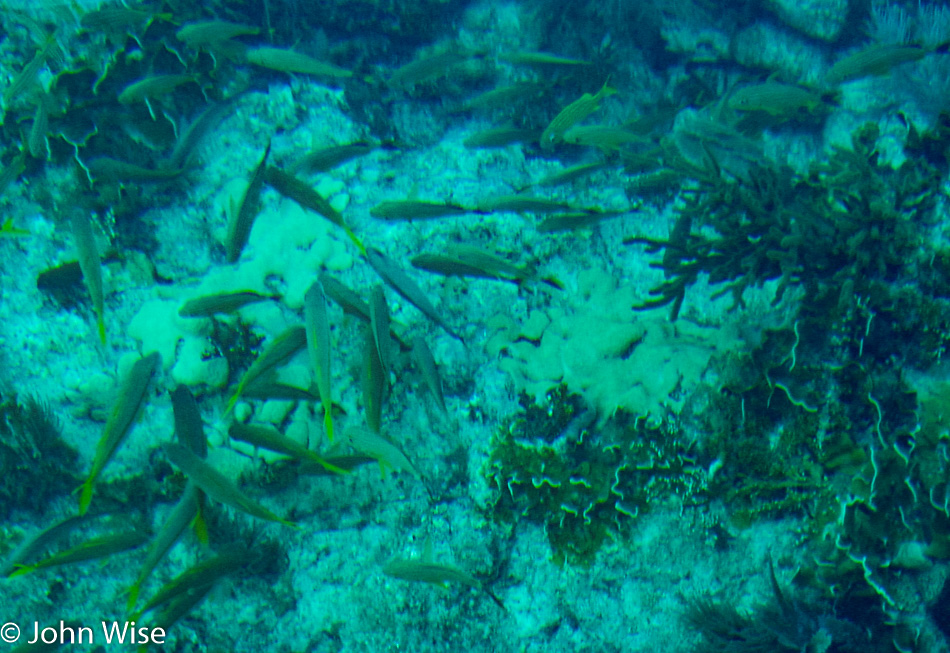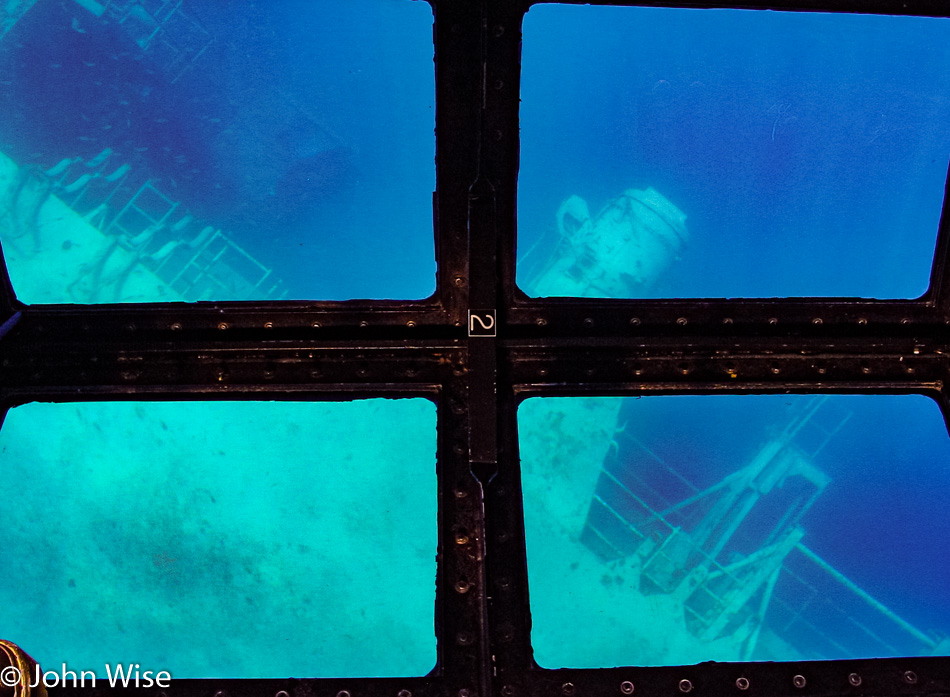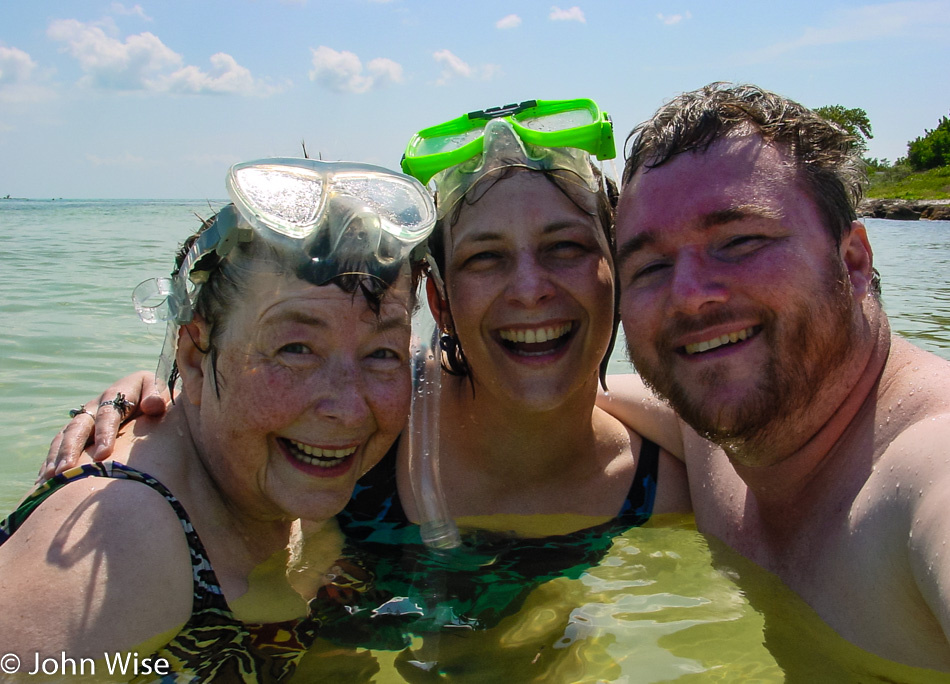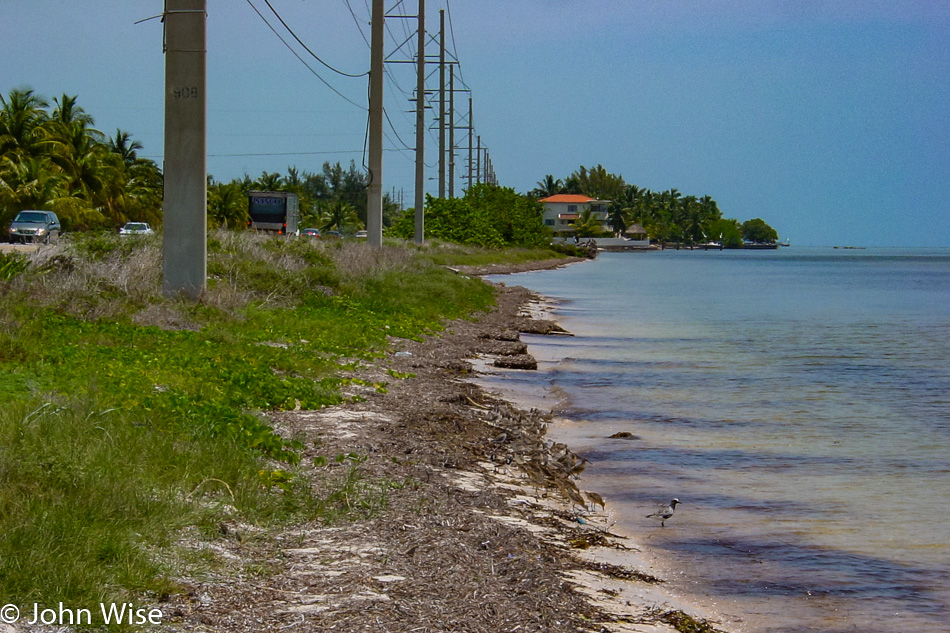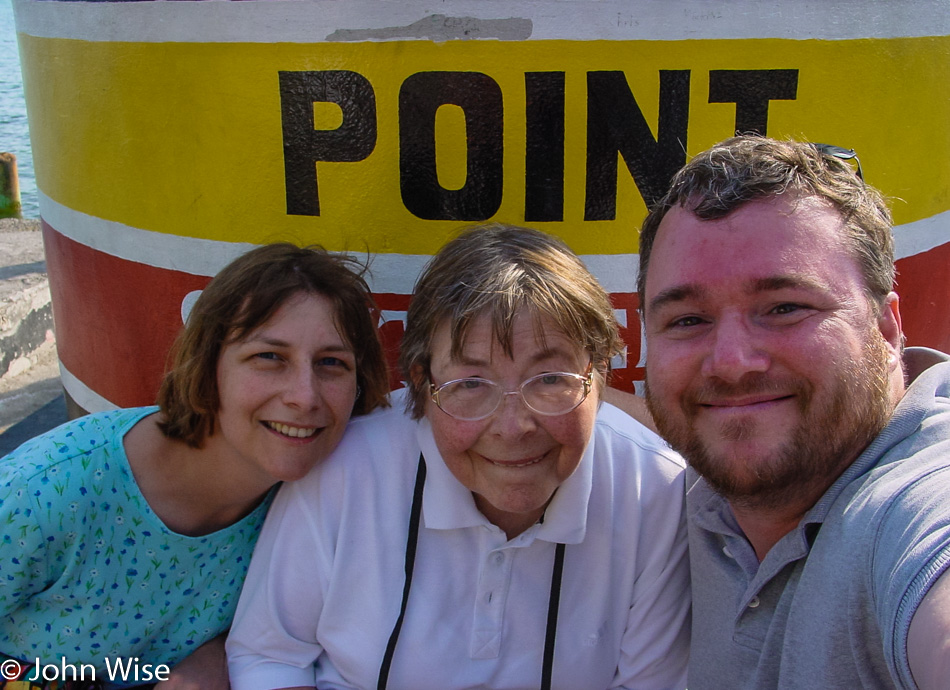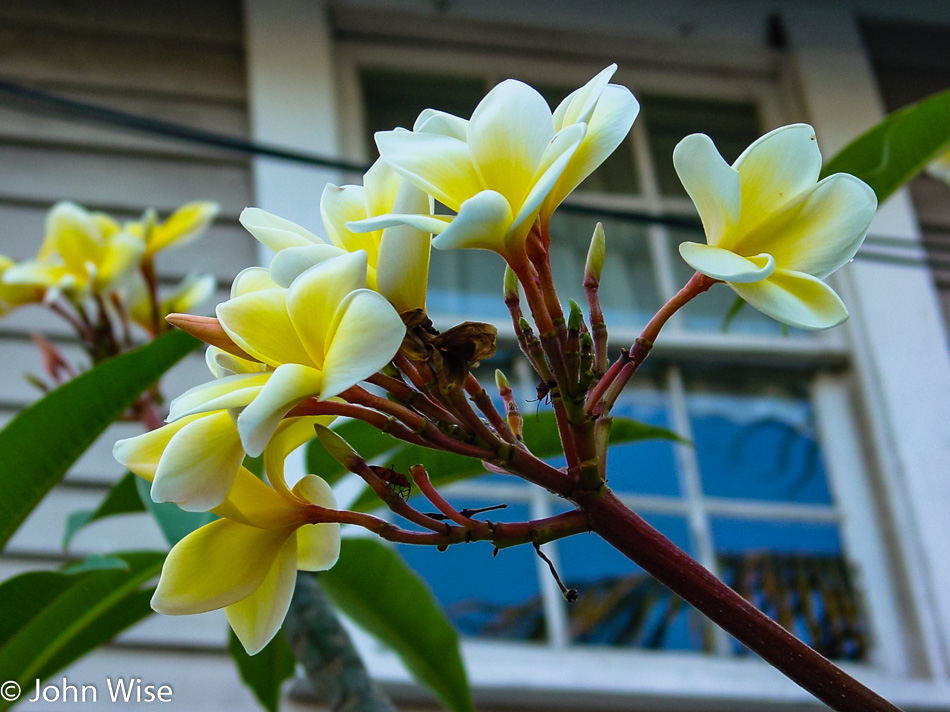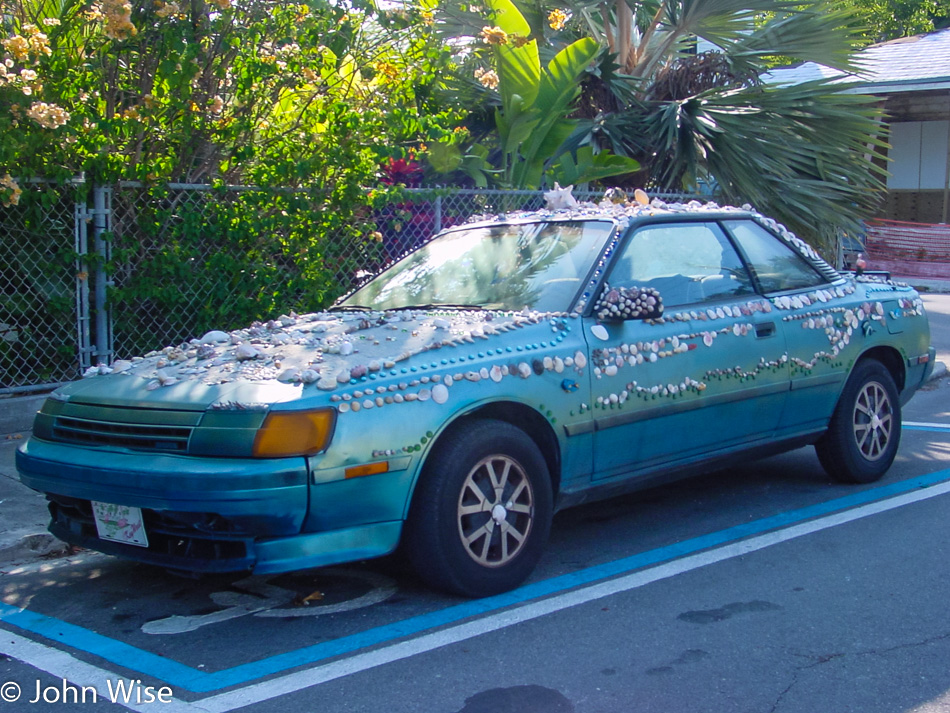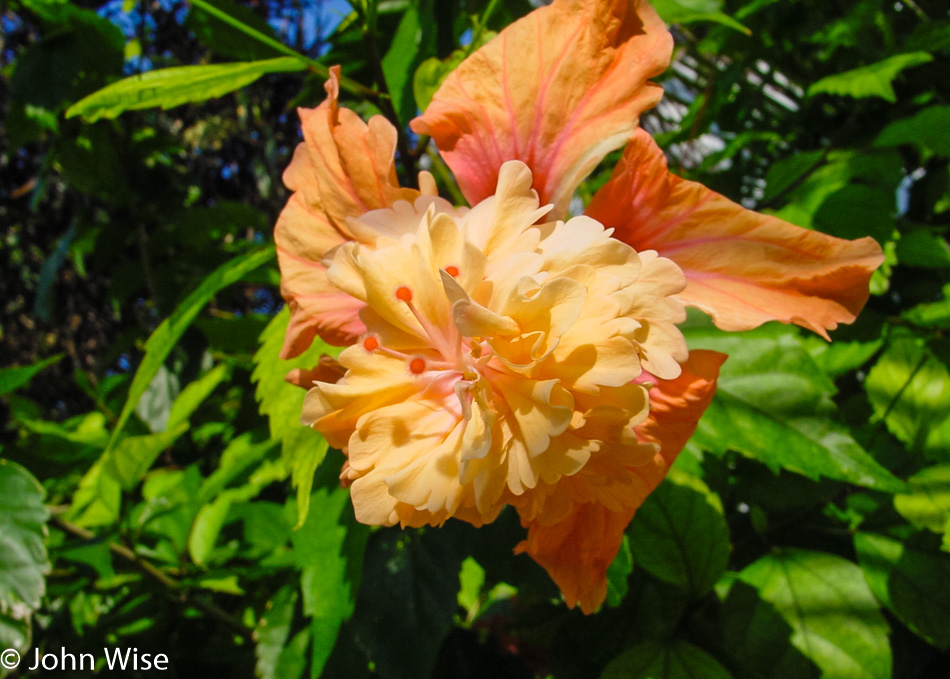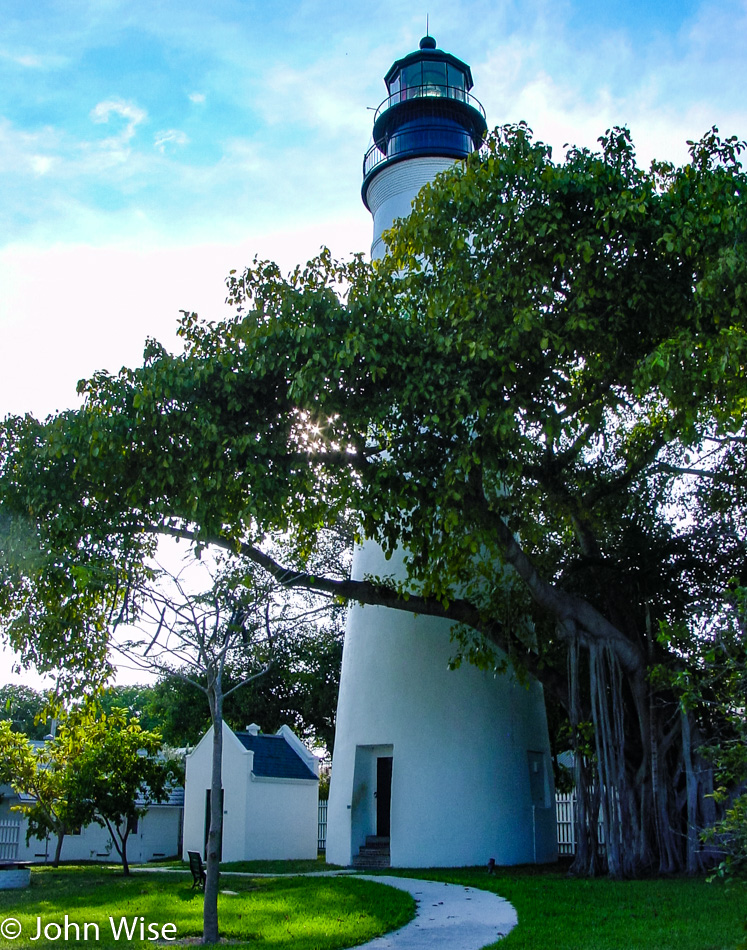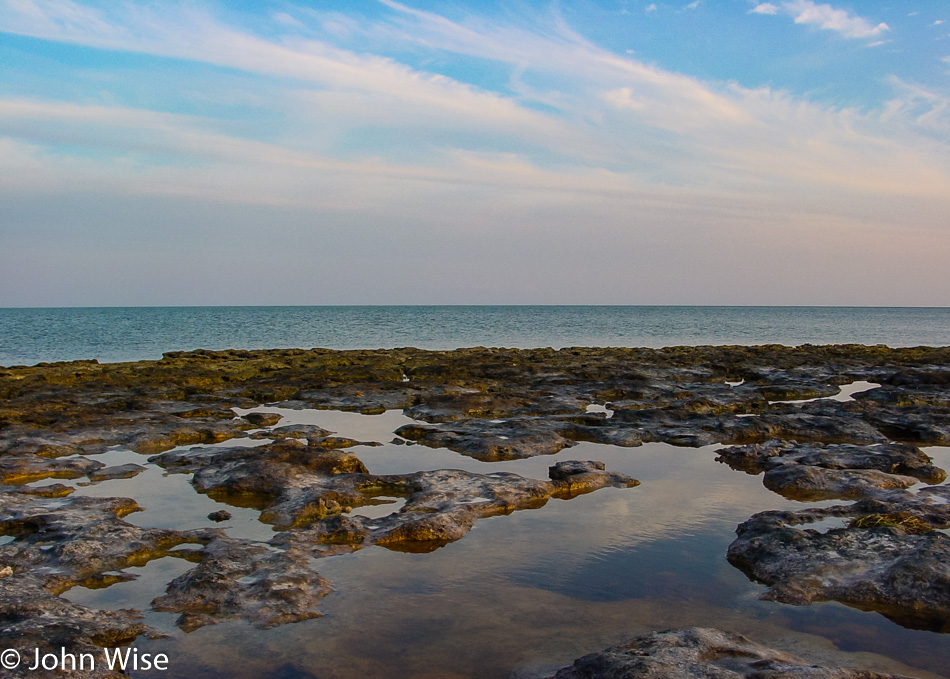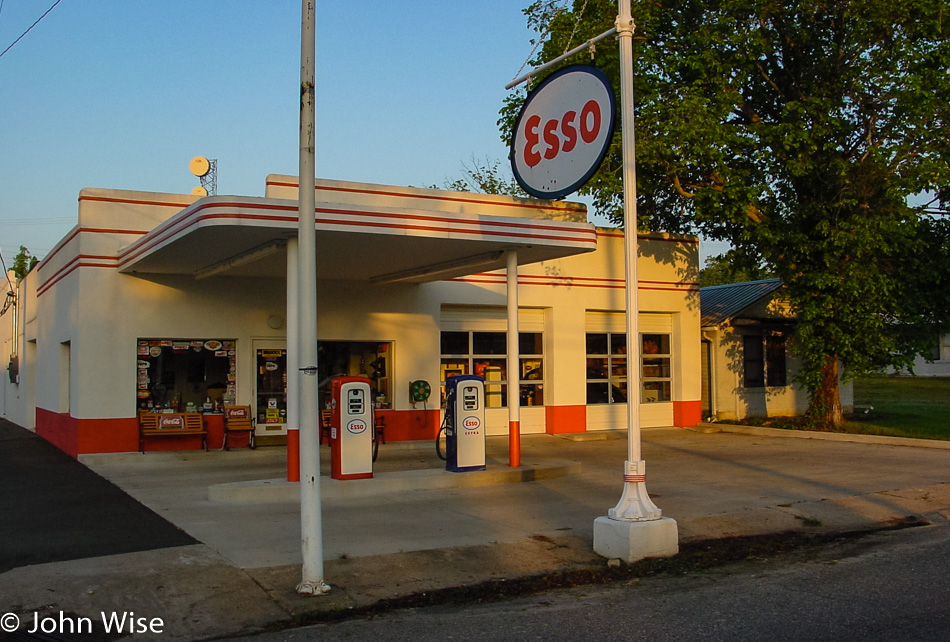
Mena, Arkansas, was where we took our overnight stop, and as you can see, it is shortly after sunrise that we are getting underway. This old Esso gas station opened back in 1928, and after years of decline, it was renovated before the turn of the century and is now a roadside attraction.
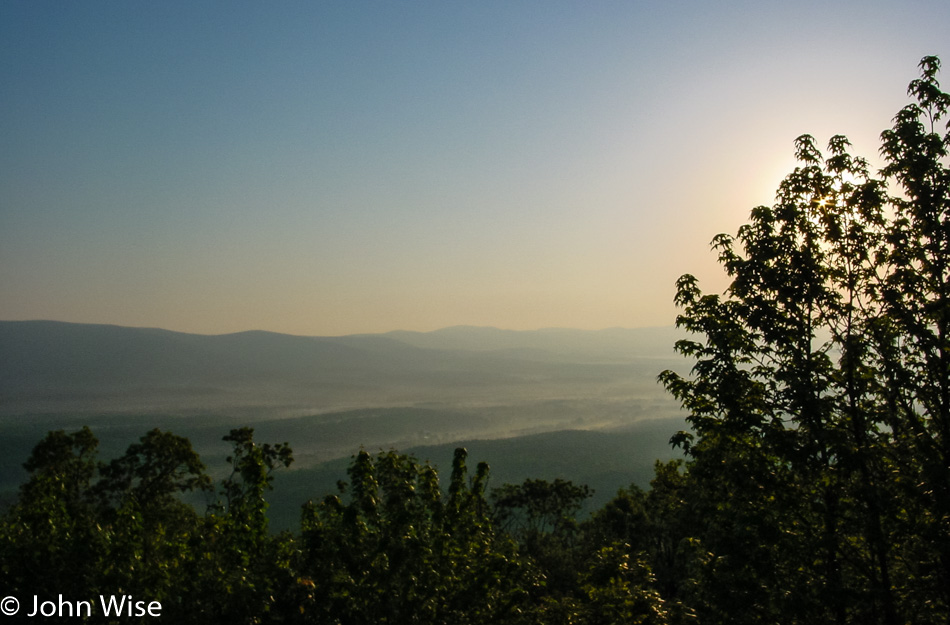
Mena is located at the foot of Rich Mountain, which is the second-highest peak in Arkansas, standing at 2,681 feet or 817 meters. We were heading up towards Rich Mountain when I took this photo on our way to Queen Wilhelmina State Park.
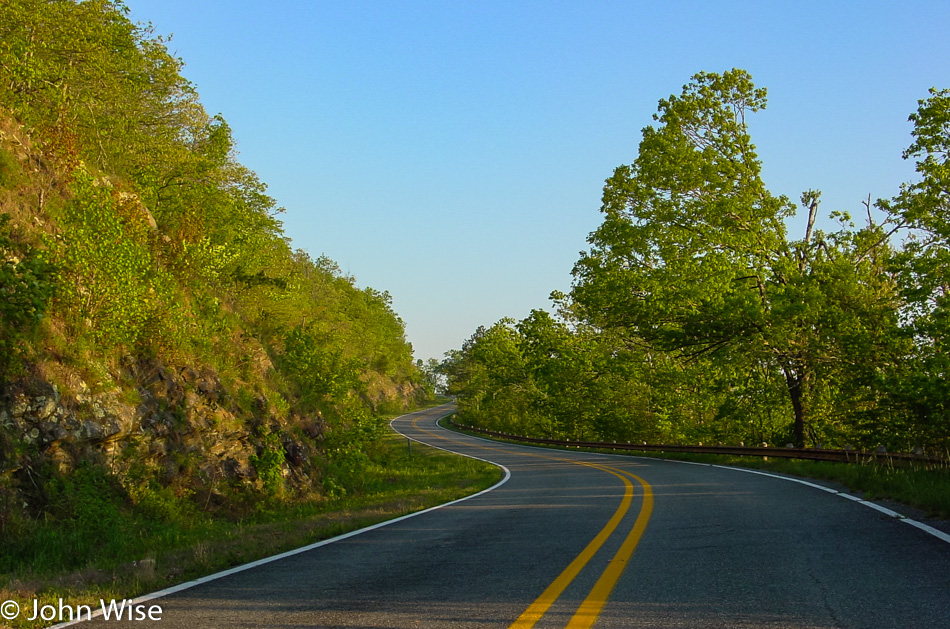
There’s very little time to stop and smell the flowers as we have 1,200 miles to cover between now and tomorrow night, so we end up taking some of our photos right through the windshield of the car while driving up these winding mountain roads. Oh, you can tell this is from the driver’s side? Yeah, I’m guilty of this small bit of unsafe driving.

We couldn’t pass up the opportunity to get a closer look at an old steam train and then to find out that we could crawl up on it, well that deserved a photo. We are about to leave the Queen Wilhelmina State Park on our race westward.
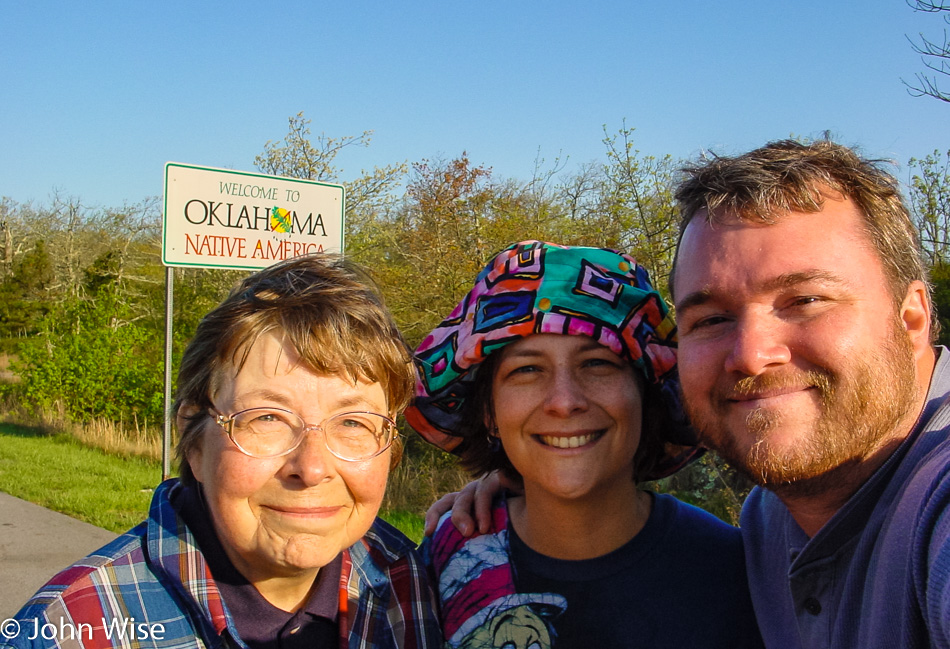
Leaving Highway 88 behind and joining Highway 1, also known as the Talimena Scenic Drive as we pass into Oklahoma.

Llamas and alpacas on a grassy hillside with flowers? Well, that adds to the scenic quality of this road in my book.
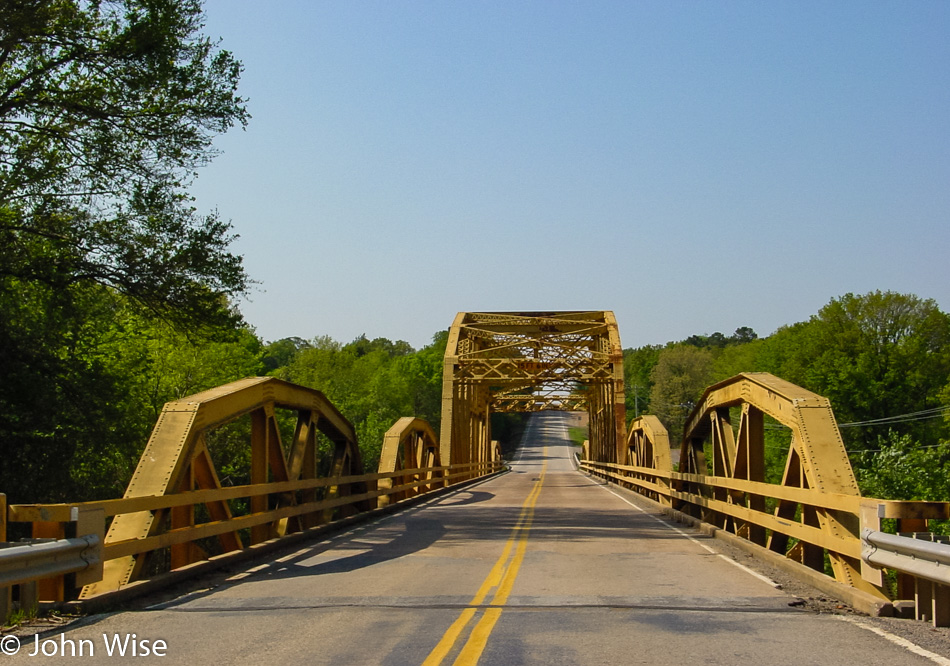
We won’t be in Oklahoma long as we beeline it to Texas.
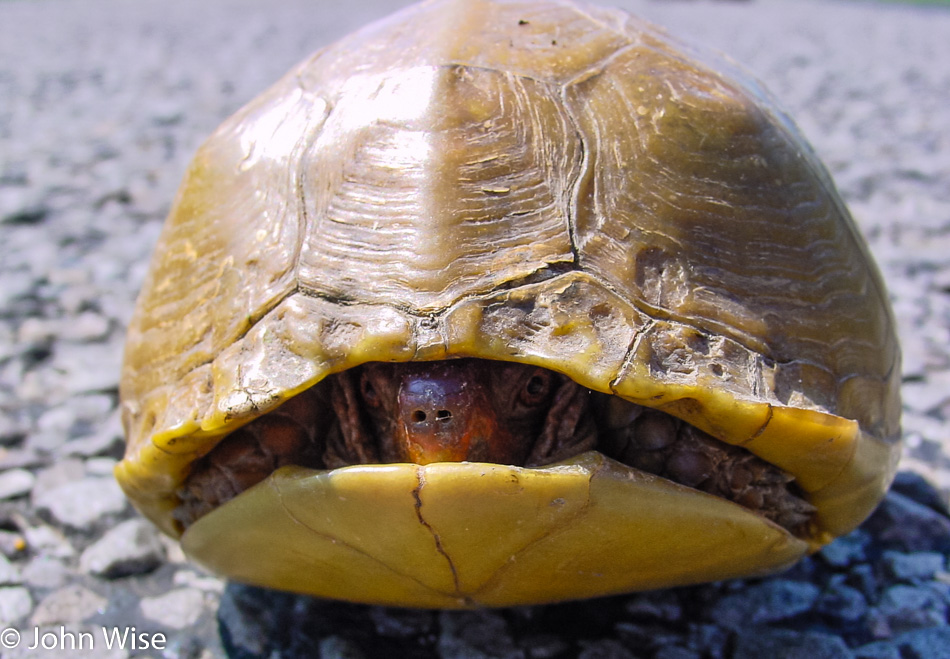
This tortoise from Antlers, Oklahoma, as opposed to a tortoise with antlers, is certainly moving a lot slower than we are today, a matter of fact, too slow, and so we pulled over to nudge it to safety. This one, fortunately, didn’t need to be lobbed like a football.
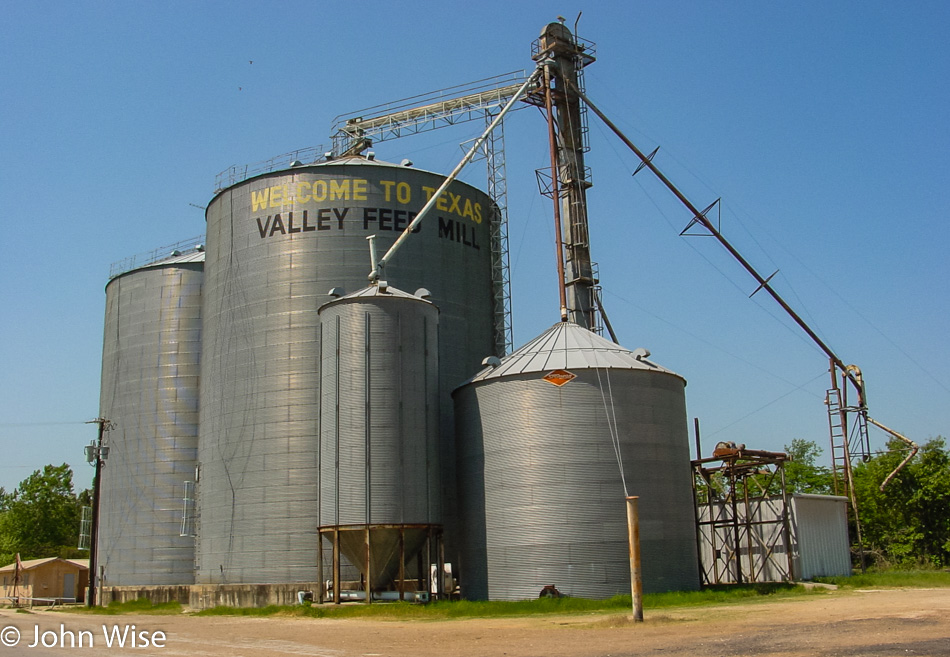
Welcome to Texas and the land of long roads.
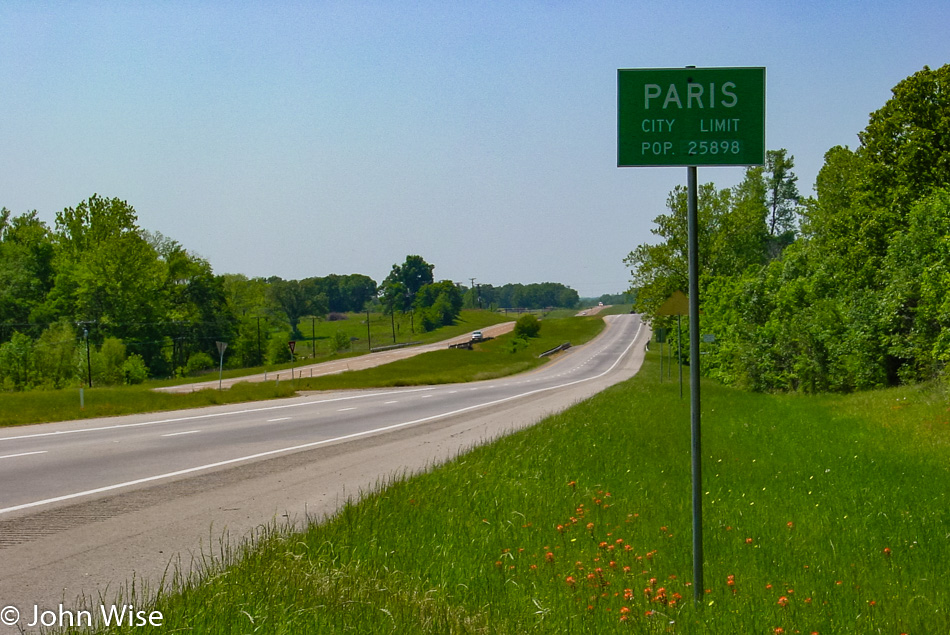
You should know that Wim Wenders has inspired this visit to Paris, Texas. I first learned of Wim Wenders from Dennis Hopper, who told me about working with him on the movie The American Friend. Another bit of nostalgia: it was during these meetings with Dennis Hopper that I also met Harry Dean Stanton, who plays the lead role in the movie Paris, Texas by Wim Wenders. How I came to hang out with Mr. Easy Rider is another story that I’ll publish at some point.
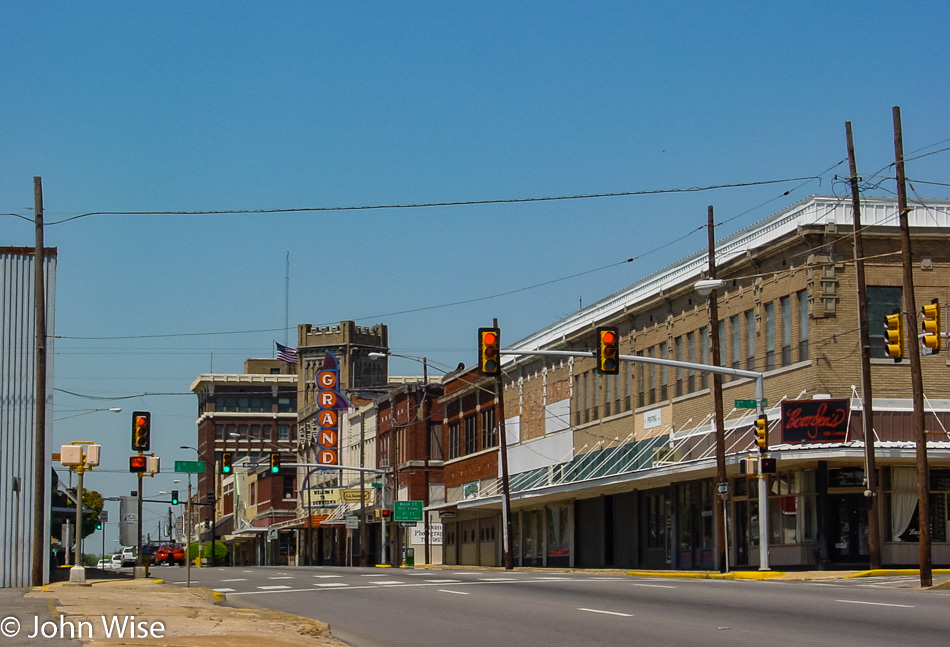
Of course, visiting Paris in Texas is a bit of a treat for my mother-in-law as she never heard of another Paris outside of France. The town is pretty quiet today, and looks like its prosperity is on the wane.
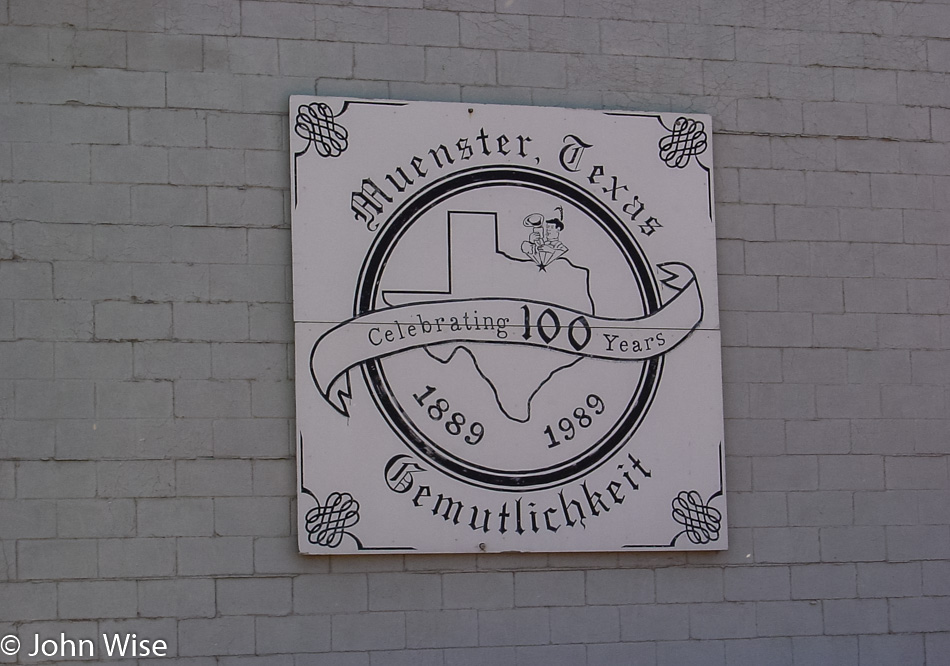
From Paris to Muenster, Germany…I mean Texas.
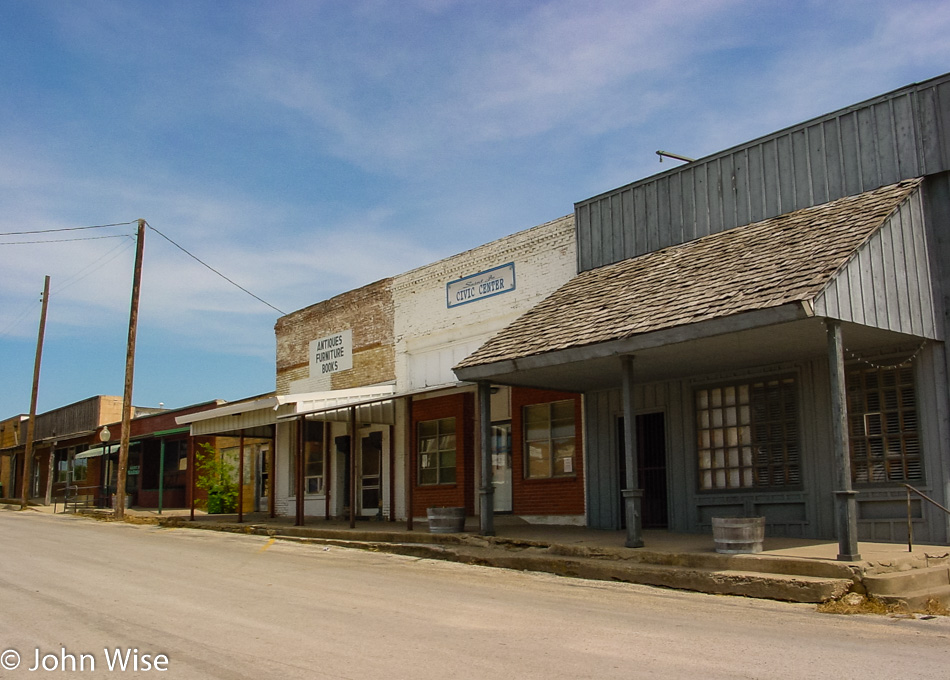
This required some sleuthing on Google Maps to figure out our driving route and what town this might have been as we were driving from Paris to Muenster and then the time stamp on the photo so I could get an approximation of how many miles we might have driven. Turns out that we are in St. Jo, Texas and Google Street View confirms it, although the town has been renovating the main square since we drove through.

Good thing others take photos and write about missing roadside attractions otherwise, I may have never found out that this bull statue used to stand at Lone Star Hereford Ranch in Ringgold, Texas. It’s sad to see such large lawn ornaments go away; kind of makes you wonder how you retire a 20-foot-tall bull.
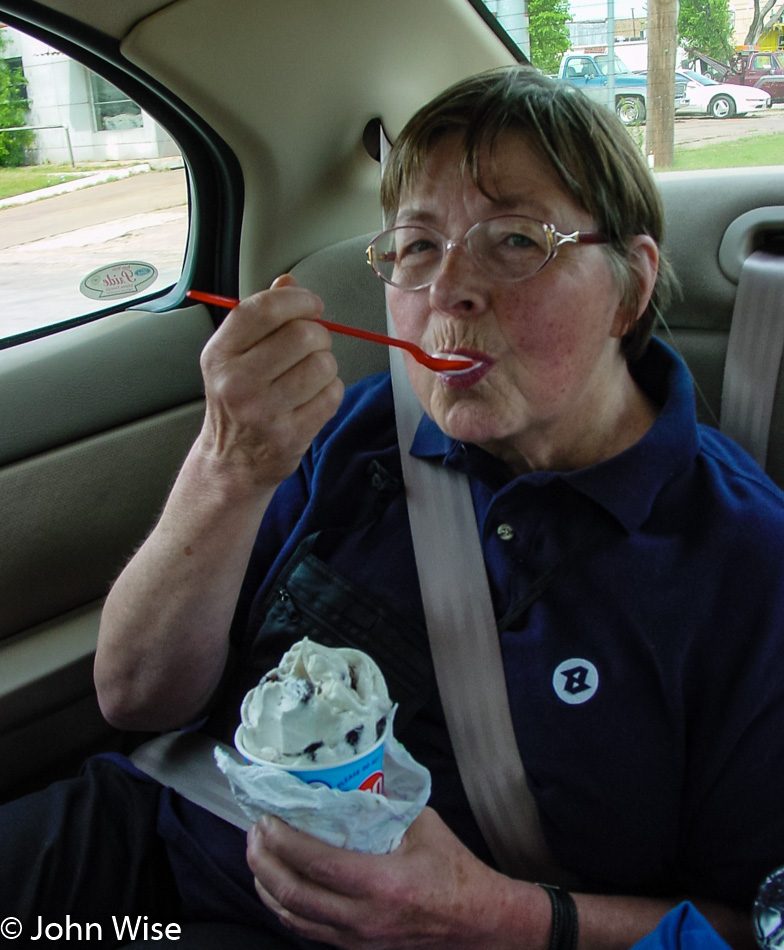
If the mother-in-law is falling asleep in the back seat, a surefire way to wake her up is to make a stop at a Dairy Queen. Jutta didn’t know how much she liked “fake” ice cream until she tried a Blizzard, and then every time we passed one, she’d be sure to point out, “There’s another Dairy Queen.” This particular one was in Henrietta, Texas.

We are west of Wichita Falls, Texas, as we trek across the Lone Star state.
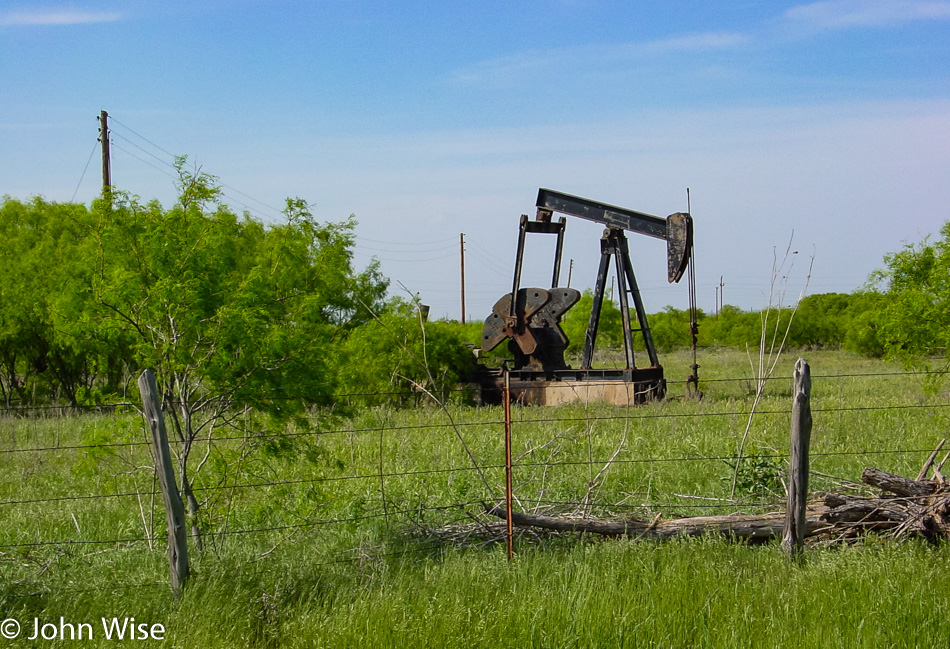
If we didn’t pass cattle and oil pumping operations we might not have known that we really were in Texas.

A far cry from the Esso we visited earlier in the day back in Arkansas. With no one around to ask we had no way of finding out anything about this old gas station that has obviously been closed a good long time.
Edit: Turns out this was in Mabelle, Texas, but has since been torn down.
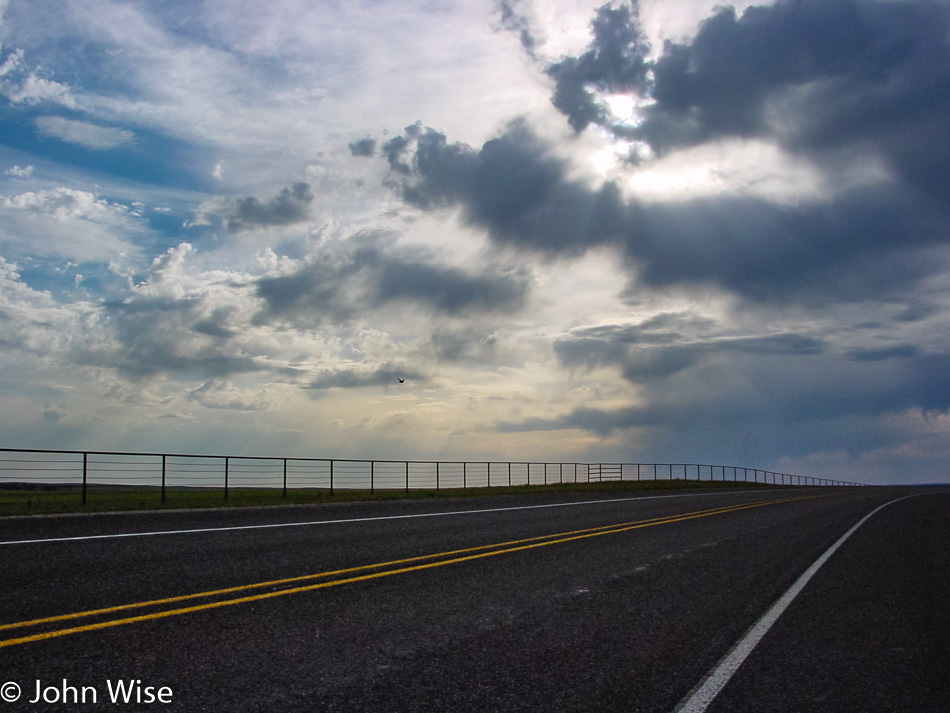
This could be somewhere between Lubbock and Plains, Texas, but then again, it could also be between Guthrie and Lubbock.
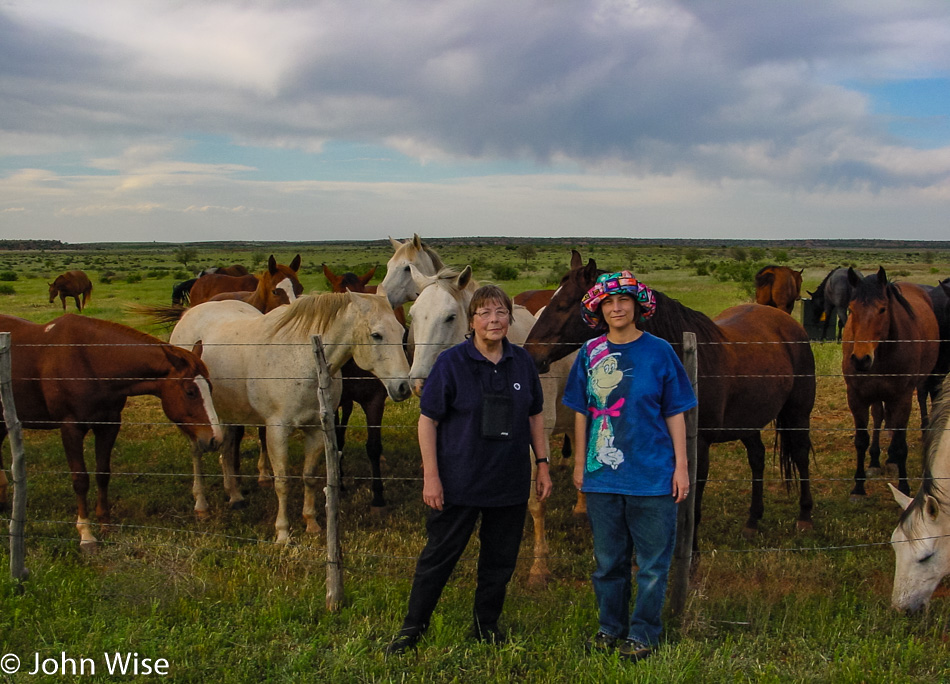
More friendly horses and two German women in western Texas.
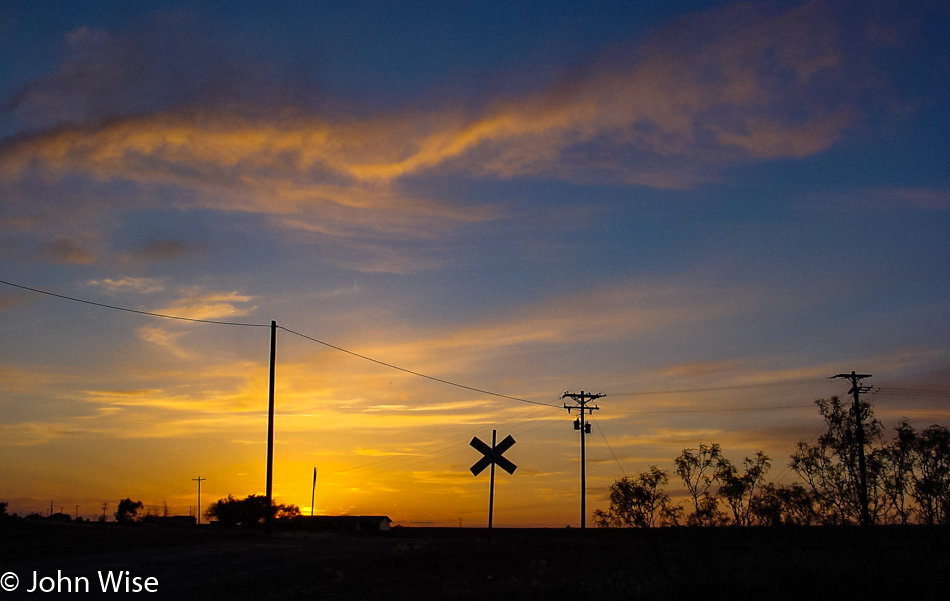
After more than half a day driving across that gargantuan state, we are finally in New Mexico and seeing hints of the Arizona sunsets we are about to re-encounter. From Plains, Texas, we drove to Lovington, New Mexico, on our way to Artesia, New Mexico, where we’ll spend the night in some cheap roadside motel.
Though we were in the car the majority of the day we still were able to carve out a great encounter with the countryside of Arkansas, Oklahoma, Texas, and a bit of New Mexico late in the day. Obviously, we stayed off the major highways, and that certainly extended our time on the road, but we managed to drive nearly 800 miles today and, along the way, collect some memorable moments that will now stick with us for the rest of our lives.
